|
6/22/2022 Book Review: The Weather Makers: How Man is Changing the Climate and What it Means for Life on Earth-Tim Flannery. Reviewed By: Thomas Riggins (2/7)Read NowPart 2 CO2 is not itself the only cause of global warming. Rather, Flannery says, its ability to "trigger" the production of water vapor is far more important. It creates a "feedback loop": CO2 warms the air thus producing more H2O vapor which warms the air even more, then CO2 warms this new air, etc. H2O vapor also makes up the clouds which play a dual role. Thin high flying clouds reflect heat energy back into space, low flying thick ones trap it and warm the atmosphere. The CO2 generated by fossil fuels is responsible for 80% of global warming as a result of these processes. One of the reasons it is so dangerous is its longevity in the atmosphere. Flannery points out that 56% of the CO2 generated in the last couple of hundred years is still in the atmosphere. Where does most of it come from? We are told it's from all the billions of motors we have made that run on fossil fuel. "Most dangerous of all are the power plants that use coal to generate electricity." It looks like every new coal fueled power plant is another nail in the coffin of our planet. The next most dangerous greenhouse gas is methane: CH4. This mostly comes from natural gas. Nature has its own ways of removing carbon gases from the air-- unless we overload the system (which is what our profit driven capitalist system is doing ). The forests and the oceans have been thought to be the biggest carbon "sinks" but recent research has shown that only the oceans really count-- from 1800-1994 they stored 48% of the carbon put out by our system "while life on land has actually contributed carbon to the atmosphere." Now we need a little history. Genetic analysis shows that about 100,000 years ago there were only about 2000 breeding members of our species on Earth. A very small population. Now there are six billion of us (not all of us breeding). About 10,000 years ago some of us took up agriculture and the industrial civilization of today is the result. There are still pockets of humans, in the Amazon for example, with cultures untouched by developments of industrial civilization (but not for long). All humans lived as hunter gatherers until the agricultural revolution. There is no evidence that we are any smarter today than then, or that present day hunter gatherers are any less smarter than their city dwelling cousins. So what were we doing for 90,000 years until agriculture came along. Why didn't we become agricultural much sooner? Scientists have been taking ice cores from the poles and from glaciers around the world. These reveal that violent climate changes and alternating ice ages and warm periods were taking place on and off throughout the period of our early gestation. These periods show major CO2 fluctuations also occurring and being responsible for climate changes. But these CO2 fluxes were of natural origin. What is going on today is caused by our industrial system. The last great ice age, of many, lasted from 35,000 to 20,000 years ago. Around 20,000 years ago another natural flux towards global warming began which led, by 10,000 years ago to the climate we have today. Between 20,000 and 10,000 years ago the Earth warmed up by 9 degrees F. This was a little under an increase of 2 degrees F per 1000 years. But with our coal power plants and other fossil fuels we are slated to heat the Earth between 2 to 8 degrees F in this century alone. This will be an unmitigated disaster for life on Earth. It will lead to the greatest extinction event (it has already begun) since the end of the Age of the Dinosaurs 65 million years ago. [Since birds are dinosaurs they are not technically extinct, scientists tell us.] The long warming period that began 20,000 years ago was marked by a zig zag back and forth between alterations of hot and cold climates which finally stabilized about 8000 years ago in what scientists call "the long summer" [i.e., the climate since the agricultural revolution]. So what were humans doing up until then? Well, with the coming of the long summer we slowly left our caves and huts, populations increased, agriculture led to the founding of early civilizations.... and here we are. Part Three coming next Wednesday. AuthorThomas Riggins is a retired philosophy teacher (NYU, The New School of Social Research, among others) who received a PhD from the CUNY Graduate Center (1983). He has been active in the civil rights and peace movements since the 1960s when he was chairman of the Young People's Socialist League at Florida State University and also worked for CORE in voter registration in north Florida (Leon County). He has written for many online publications such as People's World and Political Affairs where he was an associate editor. He also served on the board of the Bertrand Russell Society and was president of the Corliss Lamont chapter in New York City of the American Humanist Association. He is the author of Reading the Classical Texts of Marxism. Archives June 2022
0 Comments
The march about to start with People’s Summit banner along with a banner of solidarity with Venezuela. Photo: Rick Sterling. Last week (June 8-10) there were two summits in Los Angeles, California: the Summit of the Americas hosted by the US State Department and the Peoples Summit hosted by US and international activist organizations. The two summits were held in the same city at the same time but could not be otherwise more different. Summit of SOME of the Americas Begun in 1994, in the heyday of US international dominance, the Summit of the Americas is officially a function of the Organization of American States. It is meant to coordinate and consolidate US economic, political and cultural interests. The first summit, held in Miami, served this goal well. The Soviet Union had broken up, severely hurting allies such as Cuba. Neo-liberalism was on the march, even in countries such as Nicaragua where the Sandinistas had been voted out of power. The US had recently invaded Panama, making an murderous example of any country or leader that defied US dictates. Since 1994, there have been Summits of the Americas every three or four years. The summits in Canada (2001) and Argentina (2005) had large anti-summit protests against capitalist globalization. In Panama in 2015, Cuba was invited to the summit for the first time after a group of countries threatened to boycott the summit if Cuba was again excluded. President Obama met and shook hands with Cuban President Raul Castro. There was widespread agreement and pleasure at the US beginning to normalize relations with Cuba. In 2018, the US hostility to Cuba resumed under President Trump. The White House administration referred to Cuba, Nicaragua, and Venezuela as a “troika of tyranny”. The policy of exclusion continues under the Biden administration and this became a major feature of the just concluded Summit of the Americas. Despite threats to boycott the gathering by many Latin American and Caribbean presidents, the US chose to exclude Cuban, Nicaragua and Venezuela. This resulted in seven country presidents choosing not to attend: Mexico, Bolivia, Honduras, St Vincent, Antigua, Guatemala, El Salvador. Mexican President Andres Manuel Lopez Obrador (AMLO) said simply, “There cannot be a summit of the Americas if all the countries of the American continent do not participate. Or there can be, but …. it is just a continuation of the old policy of interventionism, or disrespect of nations and their peoples.” As it turned out, the absence of three excluded and seven allied leaders became a predominant feature of the Summit. The ghost of the ten hung over all events. The summit accomplished little with the lack of preparation being compared to a “privileged but lazy student” who does not prepare for a test. The Atlantic analyzed the situation: “The Summit of the Americas, hosted this year by Joe Biden, offers a measure of how far the U.S. has fallen.” The attendance was small and resolutions filled with platitudes with little substance. Criticisms of the US exclusion of countries were openly aired. The NY Times described the Summit by quoting a former Mexican ambassador who said many countries are “challenging U.S. influence, because U.S. influence has been diminishing in the continent.” At the Summit of the Americas, Secretary of State Antony Blinken and OAS leader Luis Almagro spoke at a panel about “ Journalistic Freedom”. Journalist Walter Smolarek exposed the farce as he boldly confronted Almagro because of his complicity in the 2019 Bolivian coup and more. There was a plea from many countries to get beyond conflict and cold war, to genuinely work together to address the looming and already dangerous results of climate change. The Summit of the Americas was expensive. Just the LA police security cost over $15 million. Peoples Summit 2022 Two miles away from the Summit of the Americas, the Peoples Summit was held at the Los Angeles Technical Trade College. The Peoples Summit included an art and poster pavilion, a huge hall for panel discussions and speeches, and an outdoor pavilion featuring dozens of activist organizations and craftspeople. There was live music and dancing later at night. Over a thousand people attended and spirits were high. The complex affair was organized by over ten convening organizations. These included the Answer Coalition, International Peoples Assembly, CodePink and unions SEIU 721 and AFT 1521. There were over a hundred individuals providing support and organization for the event. Many activists flew or drove to Los Angeles from across the US. In contrast with the Summit of the Americas , the Peoples Summit operated on a shoestring based on volunteers. A wide array of domestic and international issues were addressed at the Peoples Summit. They included Health as a Human Right, Gender Violence, Food Sovereignty and Climate Justice, Cultural Resistance, Youth Organizing Strategies, Justice for TPS and Undocumented Community, Lessons from Below and Organizing Unhoused Communities. Plus many more. In 2020, Los Angeles counted over 66,000 homeless people in the city. The latest survey, from January this year, is going to be released June 22. These and other issues were explored by activists at the Peoples Summit. A major component of the Peoples Summit was international affairs and the connection to struggles at home. While the US spends well over $800 billion annually on the military, there are virtually no homes being built by the US government. The US Department of Housing and Urban Development offers rental assistance and advice. In contrast, Venezuela has constructed 4 million homes for Venezuelan families. US censorship and attacks on media critics were further revealed at the Peoples Summit where Julian Assange’s father and brother talked about the world’s most famous imprisoned journalist and publisher. The Wikileaks founder has been imprisoned for ten years, with over three years at Belmarsh maximum security prison. He is now threatened with extradition to the US, a kangaroo court and life imprisonment. His only “crime” has been to reveal the real crimes of the US military and government. There was an outstanding lineup of speakers each of the three days of the Peoples Summit. These included local activists and indigenous leaders and noted international leaders such as Honduran Bertha Zuniga and Puerto Rican Oscar Lopez Rivera. The presidents of Cuba and Venezuela, plus Evo Morales, the former president of Bolivia, sent eloquent messages of support to the Peoples Summit. On Friday June 10 there was a mass march and rally from the Peoples Summit at the community college to the street in front of the Summit of the Americas. The streets of downtown Los Angeles echoed with calls, chats and songs as the march proceeded. Conclusions There is growing criticism of US presumptions of supremacy and US foreign policy promoting division and conflict. This was expressed by leaders who stayed away from the Summit of Americas and also many leaders who attended. The Prime Minister of Barbados, Mia Amor Mottley, said frankly, “It’s wrong that Cuba and Venezuela and Nicaragua are not here, because as you heard from the Bahamas, we need to speak with those with whom we disagree….There’s too much narrow-casting instead of broadcasting. There’s too much talking at, instead of talking with…. And the simple priority must be people, not ideology.” US exceptionalism and the exclusion of countries is increasingly being challenged. This matches the global criticisms of US unilateral sanctions. At the last UN General Assembly, the vote was 184-2 in denouncing US embargo on Cuba. Seventy percent of world nations believe US sanctions violate international law. The Summit of the Americas showed the US attempting and failing to impose its will on the hemisphere. The Peoples Summit showed a different vision which is in accord with the wishes of most countries and people. AuthorRick Sterling is a journalist based in the Bay Area, California and he is also a board member of the Task Force on the Americas. He can be reached at [email protected] This article was republished from Orinoco Tribune. Archives June 2022 6/20/2022 Israel’s illegal occupation and blockade of Gaza, 15 years on. By: Tanupriya SinghRead Now
Since 2007, Israel has cemented a blockade of Gaza in an act of illegal collective punishment. The blockade and accompanying military offensives have killed thousands of Palestinians, and devastated social and economic life in the enclave.
Destruction in Gaza. Photo: Hosny Salah
15 years have passed since Israel began the imposition of an illegal and cruel blockade on the Gaza Strip, turning the approximately 362-square kilometer coastal enclave into the “world’s largest open air prison,” trapping and isolating over 2 million Palestinians.
Imposed under the guise of containing Hamas and ensuring “security,” the blockade of Gaza has been internationally recognized as a form of collective punishment, pushing its economy into collapse and violating essential rights including the right to life. In 2021, two out five people in Gaza were food insecure. The overall unemployment rate reached 50.2%, with the figure soaring to 71.8% among young people between the ages of 15 and 29. According to a World Bank report the poverty rate in Gaza reached 59% in 2021. 40% of Gaza’s population is children aged 14 years and younger– many of whom have been injured, killed, traumatized and otherwise harmed by four major Israeli military assaults, and the accompanying blockade, within their lifetime. The most recent attack took place in May 2021 in which over 260 Palestinians were killed and over 2,000 were injured. A recent Save the Children report found that “four out of five children in the Gaza Strip reporting that they live with depression, grief and fear.” Emboldened and armed by the West, Israel has continued to commit gross human rights violations and war crimes against the besieged population of Gaza. This violence is cyclical, given that 66% of the enclave’s population are refugees who were forcibly displaced from their homes during the 1948 Nakba. Israel killed 2,219 Palestinians in its 2014 war on Gaza, officially known as ‘Operation Protective Edge’. Data collated by Visualizing Palestine, Al Haq, and other organizations shows that 56% of the people killed were refugees.
Aftermath of Israeli shelling at the Jabalia refugee camp in July, 2014. Photo: Credit: Shareef Sarhan/UN
Israel continues to deny Palestinian refugees their internationally recognized and guaranteed right of return. This sparked the historic Great March of Return protests in 2018. Over the course of the next nearly 2 years, Israel killed over 200 people and injured over 33,000. Israel’s response to any form of Palestinian resistance, be it protests or armed struggle (a legitimate right enshrined in international law), has been disproportionate, deadly, and illegal. Buoyed by the US, Israel has continued to evade accountability for its illegal colonial occupation and crimes in Palestine.
In the case of the Gaza Strip, it has tried to claim that it is no longer an occupying power and as such cannot be held to corresponding obligations. However, this is decidedly false. This was most recently documented in the first report of the UN-backed Independent International Commission of Inquiry on the Occupied Palestinian Territory, including East Jerusalem and Israel: “Despite the claim by Israel that it disengaged from Gaza in 2005, the Commission notes the positions of the Security Council and the General Assembly…, and the positions of previous commissions of inquiry, along with the lack of authoritative findings to the contrary, that Israel remains in occupation of the territory by virtue of the control exercised over, inter alia, its airspace and territorial waters, land crossings at the borders, supply of civilian infrastructure, including water and electricity, and key governmental functions…” The origins of the ongoing blockade: 1990s to the present
While the blockade in its current form is 15 years old, Israel’s restrictions on Gaza can be traced back to at least the early 1990s, in the wake of the First Intifada. Even though the terms of the Oslo Accords dictated that Gaza and the West Bank be treated as a “single territorial unit,” Israel continued to impede free movement, proceeding to enclose Gaza behind a fence and a wall in 1995. Gaza was cut off almost completely from the West Bank after the Second Intifada. Work and travel permits were revoked, family and spousal reunification visits to Israel were prohibited, and imports and exports were severely restricted.
In 2005, Israel abandoned its settlements, removed 8,000 settlers, and redeployed its troops from Gaza under a “disengagement plan” – nearly 5 decades after occupying the enclave in the 1967 war. Following the victory of Hamas in the Palestinian legislative elections in January 2006, Israel tightened restrictions on Gaza. The brutality of what was to come was captured in a statement by Dov Weisglass, then senior advisor to Prime Minister Ehud Olmert, stating that the purpose of Israeli policy towards Gaza was “to put the Palestinians on a diet, but not make them die of hunger.” After Hamas took over Gaza in 2007, Israel cemented the blockade— seizing control of crossings and prohibiting the movement of people, and further restricting the import and export of goods in and out of the enclave. Documents exposed in a Freedom of Information petition filed by the Gisha organization revealed that Israel had deployed a “deliberate reductive policy” to determine the amount of food imports to be allowed into Gaza. Calculations were made on the minimum caloric intake required to keep Palestinians effectively just short of starvation. In the years since, Israel has retained control over two crossings out of Gaza including Beit Hanoun. The only other way out is through the Rafah crossing which is controlled by Egypt. Israel also prohibits the operation of air and sea ports in Gaza. As part of the blockade, it also restricts access to fishing areas, arbitrarily restricting permissible zones to just 3 nautical miles. Palestinian fisherfolk are routinely subject to threats, arrests, and attacks by the military. The blockade and successive military attacks have forced the closure of 90% of workshops and factories in Gaza. Exports have been reduced by 70% since pre-2007 levels.
“Unlivable by 2020”: the destruction of Gaza’s resources and infrastructure
For over a decade, the UN has warned that Gaza will become uninhabitable due to “grave violations of economic, social, and cultural rights resulting from the occupation and ongoing long-term land, air, and sea blockade and repeated attacks that have destroyed essential infrastructure.”
In March, Gaza’s Water and Environmental Quality Authority stated that 98% of water in the enclave was unfit for human consumption. In its 2021 report, Amnesty International stated that Israel had consolidated full control over all water resources and related infrastructure in Gaza. It has also colonized 85% of the West Bank’s water resources, prohibiting the transfer of water to Gaza. The Coastal Aquifer, which is the enclave’s only source of freshwater, is being increasingly depleted due to over-extraction and contamination from sewage and seawater. Existing water and sewage treatment systems are unable to function properly due to widespread electricity blackouts lasting over 12 hours a day. One quarter of disease spread in Gaza has been attributed to water pollution, and 12% of the deaths of young children have been traced to intestinal infections from contaminated water. The water crisis has been compounded by successive Israeli military assaults, most recently the 11-day long bombing in May 2021 which damaged 290 water facilities in Gaza, including the sole water desalination plant in the northern part. Israel also continues to occupy 35% of Gaza’s agricultural land, and over 15% of its total area, through the establishment of illegal “buffer zones” in its eastern and northern areas. Access to these illegal zones is prohibited, with Israeli forces authorized to open fire at Palestinians found inside the area. According to the UN, Access Restricted Areas (ARAs) have reached upto 1,500 meters from the fence into Gaza, including a “no go zone” of up to 500 meters. Another tactic deployed by Israel to deny access to areas near the border fence which, to reiterate, includes farmland is through the spraying of herbicide on crops. According to the Palestinian Environmental NGOs Network (PENGON), this spraying has damaged nearly 5,000 dunums of agricultural land. Farmers in Gaza have continued to grow food and resist against such violence and threats. Gaza’s soil has also been contaminated with heavy metals and toxins following Israeli military offensives in 2008, 2012, 2014, and 2021. During the attack last May, Israel damaged over 300 commercial and industrial facilities and destroyed seven factories. Among the targets hit was the Khudair Pharmaceuticals and Agricultural Tools warehouse, the largest agro-chemical warehouse in Gaza. Incendiary artillery shells set fire to hundreds of tons of pesticides, fertilizers, and materials including plastic, nylon, and water pipes. While the Israeli army did not provide a statement on the attack, Palestinian rights group Al Haq conducted an investigation into the incident. It found that a toxic plume had affected an area of 5.7 square kilometers, spanning Beit Lahiya and its agricultural zones, and the densely populated Jabalia refugee camp. Based on its findings, Al Haq stated that Israel’s shelling of the Khudair warehouse, with knowledge of the presence of toxic chemicals stored therein, “is tantamount to chemical weapons through indirect means.” Areas hundred of meters away from the site had high concentrations of sulfur dioxide and phosphorus pentoxide, indicating a “high risk of irreversible damage to human health.” Two residents nearby reported that they had suffered a miscarriage shortly after the attack. The lives and health of Palestinians in Gaza have been endangered both by the “slow poisoning” of natural resources, and deadly military operations. Access to health has been further jeopardized by the explicit targeting of the health care system. According to a report by the Al Mezan Center for Human Rights, direct and indirect Israeli military attacks damaged four hospitals, 34 medical centers and clinics, three laboratories and nine pharmacies in May 2021. The entry of infrastructure materials and medicines needed to repair and rebuild the healthcare system is prohibited by the blockade. By the end of 2021, 40% of essential drugs and 19% of medical disposables were are ‘zero stock’, or less than one month’s supply, in Gaza. The Palestinian Authority submitted 120 requests for the entry of radiology and imaging equipment last year. Only 30% of these were approved by February 2022. In October, Israel banned the entry of 14 imaging devices used to diagnose patients for COVID-19. It also excluded Gaza from its vaccination programs, in violation of its legal obligation as an Occupying Power. Gaza’s Ministry of Health was also forced to dispose of 50,000 doses of the ‘Sputnik Light’ vaccine which were damaged due to Israeli movement restrictions. “Israel’s closure and blockade is the root cause of the deterioration of living conditions in Gaza, including inaccessibility and unavailability of many key social, economic, and environmental determinants of health. In particular, Palestinian health is challenged by soaring rates of poverty, unemployment and food insecurity, the lack of adequate housing, and the psychological effects of pervasive human rights violations and violence,” the Al Mezan stated in its report. Restrictions on movement
The occupation–controlled Erez crossing in northern Gaza is the only way for civilians to travel from the enclave to Israel. According to Gaza Unlocked, the number of Palestinians permitted to leave Gaza averaged only 86 people per day in the first nine months of 2021. This was 17% of the daily average of 2019, and less than 1% of the figures before the start of the Second Intifada. Israel’s illegal control of Gaza’s border crossings continues to prevent Palestinians from seeking education and work, reuniting with family members.
The implications have been particularly drastic for people in need of medical care. Services including radiotherapy, genetic medicine, and certain cardiac surgeries are completely unavailable inside Gaza. As a result patients must be referred out of Gaza, which then subjects them to Israel’s discriminatory permit regime. Analysis by Al Mezan shows that 36% of all permit requests in 2021 were either rejected, received no response, or were delayed by the Israeli authorities. Following this refusal, four patients, including two children, died in Gaza last year.
Even in cases where Palestinians are able to secure a travel permit, they still face arbitrary arrest, interrogation, deliberate delays and detention at the Erez crossing. The systematic and discriminatory attacks on the rights of Palestinians in Gaza are an integral part of Israel’s ongoing colonial occupation and apartheid. The UN Commission of Inquiry also noted in its report that the “continuing occupation of the Occupied Palestinian Territory, including East Jerusalem, the 15 year blockade of Gaza and longstanding discrimination within Israel are intrinsically linked, and cannot be looked at in isolation.” Palestinians have repeatedly warned that the conditions in Gaza must not be reduced to, and depoliticized as, a humanitarian crisis– rather, the resolution lies in an end to blockade and the occupation as a whole. The blockade of Gaza is a function of Israel’s attempts to isolate, segregate and fragment the Palestinian people to weaken their struggle for national liberation. However, 2021’s Unity Intifada has demonstrated that these attempts are sure to fail. Author
This article was republished from Peoples Dispatch.
ArchivesJune 2022 6/20/2022 GUNS, GERMS, AND STEEL: THE FATES OF HUMAN SOCIETIES— 25th anniversary of Jared Diamond’s now classic work in history and anthropology. A Marxist Appreciation By: Thomas RigginsRead NowFrancis Bacon, at the beginning of the 16th Century asked, in his The New Organon, what caused the differences between Europe and less developed regions of the world, He answered that the difference “comes not from soil, not from climate, not from race, but from the arts.” Had subsequent thinkers been more attentive to Lord Bacon’s observation we might have been spared many specious arguments attempting to justify racism. Jared Diamond’s book is still dealing with the question of these differences 500 years after they were posed (and answered) by Bacon. Diamond, a geography professor at UCLA, has spent many years in the field, in close contact with indigenous peoples, engaged in research (studying birds) in New Guinea. He was inspired to write Guns, Germs, and Steel when one of his New Guinea contacts, Yali, asked him his own version of Bacon’s question.”Why is it that you white people developed so much cargo and brought it to New Guinea, but we black people had little cargo of our own?” The purpose of the book is thus, Diamond tells us, to answer the question “ Why did human development proceed at such different rates on different continents?” His answer, like Bacon's, is perfectly consistent with a historical materialist interpretation. Diamond informs us that “the most basic fact of world history’’ is the conquest or extermination of non-literate farming societies and societies of hunter-gatherers using stone tools by literate societies with metal tools. The treatment of Native Americans in the U.S. is an all too familiar case of a process that is still going on throughout the world. A more contemporary example is the treatment of the Amerindians in the Amazon basin of Brazil. Our species had pretty much settled the world between 50,000 and 10,000 years ago. We should note that “ the biggest population shift in modern times (perhaps ever!) has been the colonization of the New World by Europeans, and the resulting conquest, numerical reduction, or complete disappearance of most groups of Native Americans,” a process continuing even today and not confined to the Americas, thanks to the the global reach of the capitalist system. As for germs, Diamond estimates that European-Introduced diseases killed off an astounding 95 percent of the American Indian population. And not only Native Americans. The Australian Aborigines were almost destroyed by epidemics introduced by the English at Sydney in 1788. Smallpox, again from the English, began the destruction of the San people (Bushmen) in 1713— and ditto for the people of Fiji, Tonga, Hawaii, and so on. Why were native peoples more susceptible to European germs and not vice versa? Diamond maintains that the gigantic Eurasian landmass with its east-west orientation and climatic variations provided more opportunity for early human groups to come into contact with each other, survive plagues and diseases, and eventually build up resistance to the most common germs. Meanwhile, the north-south orientation of the Americas and Africa, along with the relative isolation of island populations in the Pacific and Australia, was not conducive to the intermingling of vastly different human groups, as was afforded by the Eurasian landmass (including North Africa as opposed to Subsaharan Africa). The immune systems of these people had not developed adequate defenses to the germs the Europeans, whose immune systems had adapted to them over millennia of cross-cultural contact, brought with them. This explains the European advantage vis-a-vis germs, but what about guns and steel? Diamond points out that it was due to environmental factors that Europeans had a head start over Africans and Native Americans. It just happened that in Eurasia, especially in the Fertile Crescent, cows, sheep, goats, pigs, etc., could be domesticated. In the Americas, for example, the only domesticates were the turkey, the dog, the llama, and the guinea pig. Thus, a much lower protein yield was available, as well as the opportunity to build up immunological defenses, since most human plagues are modifications of animal diseases that humans came in contact with through the process of domestication. Also, Eurasia had more crops such as cereals and with higher yields, than did Africa or the Americas. There were only a few grain crops in Africa or the New World. West Asia, North Africa, and Europe had 33 large seeded grass species compared to 11 for the Americas and 4 for Subsaharan Africa. There is thus a material and natural basis for a greater quantity and variety of food production in the Eurasian area. This also helped produce a greater population. MORE FOOD, MORE IMMUNITY, AND MORE PEOPLE:Greater food resources, a stronger immune system, and a larger population all contributed to the Eurasian head start over other areas of the world, not race. As Diamond concludes, “this very unequal distribution of wild ancestral species among the continents became an important reason why Eurasians, rather than people of other continents, were the ones to end up with guns, germs, and steel.” This is all perfectly consistent with a materialist or scientific explanation. The larger populations that arose in Eurasia stimulated cultural contacts and the growth of invention, and finally the development of science. All this has nothing to do with “race.” It is in fact a confirmation of Bacon’s position — differences between groups of people are due to the development of the “arts.” Diamond explains how these differences came about (especially interesting are chapters such as “How China China became Chinese” and “How Africa became Black,”) There is in fact a Marxist approach in this book, although Diamond himself only makes one passing reference to Marx. But Diamond is in effect explaining the development of cultures and the differences between them, based on the material conditions of production with which people found themselves confronted — availability of plants and animals for domestication as well as the size of land masses, etc. These material conditions were the basis for the development of the relations of production — the way people had to relate to each other and to nature in order to effectively exploit the resources available to them. And the two together gave rise to the various belief systems, ideologies, religions, etc., that arose around the world as humans reflected on these conditions and tried to make sense out of the world in which they found themselves. Bill Gates was impressed by this book and is quoted in a cover blurb: “Fascinating. Lays a foundation for understanding human history “ (Hegel had already done that!). I suppose if there had been more than passing reference to Marx in the book, if the basic Marxist origins of Diamond’s type of historical analysis had been pointed out, developed and even credited (especially the chapter “From Egalitarianism to Kleptocracy”) Mr. Gates would not have been so fascinated. There is at least one important caveat worth noting. Diamond, in order to demonstrate his solidarity with the people of New Guinea, maintains the belief they are “smarter” than Europeans. This is due to their living in a complicated undemanding environment, as a result of which they developed “superior intelligence” as opposed to the likely “genetic disadvantage” of Europeans. While it is refreshing to have Europeans targeted as “genetically disadvantaged” for a change, this really won’t do (just reverse the argument to see what I mean). Once you start giving a scientific veneer to labeling any group of humans as genetically superior vis-a-vis intelligence— the floodgates of racism are opened. In this respect, Francis Bacon, a philosophical pioneer of the Age of Reason, was truer to the cause of science than our UCLA professor. AuthorThomas Riggins is a retired philosophy teacher (NYU, The New School of Social Research, among others) who received a PhD from the CUNY Graduate Center (1983). He has been active in the civil rights and peace movements since the 1960s when he was chairman of the Young People's Socialist League at Florida State University and also worked for CORE in voter registration in north Florida (Leon County). He has written for many online publications such as People's World and Political Affairs where he was an associate editor. He also served on the board of the Bertrand Russell Society and was president of the Corliss Lamont chapter in New York City of the American Humanist Association. He is the author of Reading the Classical Texts of Marxism. Archives June 2022 Two giants who share a birth date and common ideals. Two men who both, in different times, dignified our country's past to illuminate our present and future. Two heroes of the Revolution who are June children, Antonio Maceo Granjales and Ernesto “Che” Guevara de la Serna Distances matter little – in time and kilometers – if two names remain eternal in the memory of a country, fused as the same reference of integrity and courage. Two giants that history has twinned beyond a shared birth date and common ideals. Two men who both, in different times, dignified our country's past to illuminate our present and future. Two heroes of the Revolution who are June children, Antonio Maceo Granjales and Ernesto “Che” Guevara de la Serna. In Santiago de Cuba the first was born. It was 1845 when the Maceo family baptized the boy who would become a renowned Mambí leader in Cuba’s wars of independence. The second came into the world exactly 83 years later. They called him Ernesto, although his memorable life would earn him another international qualification, since that little boy, born in 1928, would leave his native Rosario, in Argentina, at a very young age to heal the "wounds" of a ravaged America. Their extraordinary lives were amazing and have become legendary. Maceo fought more than 600 battles and bore on his body 26 scars of war; while Guevara made very much his own the epic feats of the Granma yacht, the Sierra Maestra and the Cuban Revolution, before going off to fight for the freedom of Congo and Bolivia. San Pedro was not the end for Maceo, just as La Higuera was not for Che. We will carry the memory of the former’s firm voice in Baraguá insisting "No, we don't understand each other" before an enemy who sought to disrespect our homeland; and the latter who, looking his executioner in the eyes, ordered: "Shoot, there is a man here." To them both we say, Cuba contemplates you proudly. AuthorThis article was republished from Granma. Archives June 2022 6/19/2022 The Russian Worldview: A Speech by Vladimir Putin, edited with an introduction by: Thomas RigginsRead NowThis speech by Vladimir Putin presents the current Russian worldview which is diametrically opposed to the U.S. worldview and reflects a different reality than is found in the MSM and bourgeois intellectual discourse available to the majority of people in the West. It is not a socialist or Marxist worldview but that of newly evolved ruling Russian bourgeoisie. Is it progressive or reactionary? It is reactionary in relation to the worldview of the Soviet Union which it has replaced. The question of its progressiveness is debated. It claims that the Western bourgeoisie represents a failing model and a decadent culture. This is a theme adopted from the previous Communist worldview. The Russian bourgeoisie claims its model represents the new economic reality of the world system, which is multi-polar, and that the unipolar U.S. dominance model is not sustainable and represents a no longer viable, and indeed dangerous, outlook based on old fashioned colonial and imperialist objectives. The Russian bourgeoisie has made common cause with the ruling class in the People’s Republic of China (an alliance of workers and peasants and “a patriotic national bourgeoisie.”) While there is a contradiction between the social systems of Russia and China, the Russian bourgeoisie and the Chinese do not see this (at present) as an antagonistic contradiction. The U.S. led Western bourgeoisie, on the contrary, views China as its greatest existential enemy and believes there is an unresolvable antagonistic contradiction between U.S. capitalism and the Chinese road to socialism —the logical consequence of this view means either the Chinese system must change through internal reforms or change will be imposed by future military means. If it is the goal of the world progressive and socialist forces to try and prevent war and attempt to change the trajectory of U.S. imperialism, then the Russian bourgeoisie can claim to be considered as a progressive force on the world stage. The current fighting in Ukraine is the locus of the friction between these two bourgeois forces (US. and Russian.) Which narrative more accurately reflects the empirical reality of the world we live in today (simplistically reduced to Biden versus Putin) will decide the future course of the world progressive movement. This speech is therefore well worth reading in order to fully understand the issues at stake as it is one of the only sources available of the Russian view that has not been contaminated by Western propaganda. The speech is very long, and I have edited it by about 50%—I have eliminated only the large sections dealing with production figures, etc., dealing with various aspects of the industrial and agricultural out-puts of the Russian economic system which would be of interest only to specialists, and have kept all of Putin’s more generalized reflections on the philosophical and ideological differences and the differences in praxis of two systems. The entire speech is available on the internet if anyone is inclined to read the material I have left out. The President attended the plenary session of the 25th St Petersburg International Economic Forum. June 17, 2022 President of Russia Vladimir Putin: I welcome all participants and guests of the 25th St Petersburg International Economic Forum. It is taking place at a difficult time for the international community when the economy, markets and the very principles of the global economic system have taken a blow. Many trade, industrial and logistics chains, which were dislocated by the pandemic, have been subjected to new tests. Moreover, such fundamental business notions as business reputation, the inviolability of property and trust in global currencies have been seriously damaged. Regrettably, they have been undermined by our Western partners, who have done this deliberately, for the sake of their ambitions and in order to preserve obsolete geopolitical illusions. Today, our – when I say “our,” I mean the Russian leadership – our own view of the global economic situation. I would like to speak in greater depth about the actions Russia is taking in these conditions and how it plans to develop in these dynamically changing circumstances. When I spoke at the Davos Forum a year and a half ago, I also stressed that the era of a unipolar world order has come to an end. I want to start with this, as there is no way around it. This era has ended despite all the attempts to maintain and preserve it at all costs. Change is a natural process of history, as it is difficult to reconcile the diversity of civilisations and the richness of cultures on the planet with political, economic or other stereotypes – these do not work here, they are imposed by one centre in a rough and no-compromise manner. The flaw is in the concept itself, as the concept says there is one, albeit strong, power with a limited circle of close allies, or, as they say, countries with granted access, and all business practices and international relations, when it is convenient, are interpreted solely in the interests of this power. They essentially work in one direction in a zero-sum game. A world built on a doctrine of this kind is definitely unstable. After declaring victory in the Cold War, the United States proclaimed itself to be God’s messenger on Earth, without any obligations and only interests which were declared sacred. They seem to ignore the fact that in the past decades, new powerful and increasingly assertive centres have been formed. Each of them develops its own political system and public institutions according to its own model of economic growth and, naturally, has the right to protect them and to secure national sovereignty. These are objective processes and genuinely revolutionary tectonic shifts in geopolitics, the global economy and technology, in the entire system of international relations, where the role of dynamic and potentially strong countries and regions is substantially growing. It is no longer possible to ignore their interests. To reiterate, these changes are fundamental, groundbreaking and rigorous. It would be a mistake to assume that at a time of turbulent change, one can simply sit it out or wait it out until everything gets back on track and becomes what it was before. It will not. However, the ruling elite of some Western states seem to be harbouring this kind of illusions. They refuse to notice obvious things, stubbornly clinging to the shadows of the past. For example, they seem to believe that the dominance of the West in global politics and the economy is an unchanging, eternal value. Nothing lasts forever. Our colleagues are not just denying reality. More than that; they are trying to reverse the course of history. They seem to think in terms of the past century. They are still influenced by their own misconceptions about countries outside the so-called “golden billion”: they consider everything a backwater, or their backyard. They still treat them like colonies, and the people living there, like second-class people, because they consider themselves exceptional. If they are exceptional, that means everyone else is second rate. Thereby, the irrepressible urge to punish, to economically crush anyone who does not fit with the mainstream, does not want to blindly obey. Moreover, they crudely and shamelessly impose their ethics, their views on culture and ideas about history, sometimes questioning the sovereignty and integrity of states, and threatening their very existence. Suffice it to recall what happened in Yugoslavia, Syria, Libya and Iraq. If some “rebel” state cannot be suppressed or pacified, they try to isolate that state, or “cancel” it, to use their modern term. Everything goes, even sports, the Olympics, bans on culture and art masterpieces just because their creators come from the “wrong” country. This is the nature of the current round of Russophobia in the West, and the insane sanctions against Russia. They are crazy and, I would say, thoughtless. They are unprecedented in the number of them or the pace the West churns them out at. The idea was clear as day – they expected to suddenly and violently crush the Russian economy, to hit Russia’s industry, finance, and people’s living standards by destroying business chains, forcibly recalling Western companies from the Russian market, and freezing Russian assets. This did not work. Obviously, it did not work out; it did not happen. Russian entrepreneurs and authorities have acted in a collected and professional manner, and Russians have shown solidarity and responsibility. Step by step, we will normalise the economic situation. We have stabilised the financial markets, the banking system and the trade network. Now we are busy saturating the economy with liquidity and working capital to maintain the stable operation of enterprises and companies, employment and jobs. The dire forecasts for the prospects of the Russian economy, which were made in early spring, have not materialised. It is clear why this propaganda campaign was fuelled and all the predictions of the dollar at 200 rubles and the collapse of our economy were made. This was and remains an instrument in an information struggle and a factor of psychological influence on Russian society and domestic business circles. Incidentally, some of our analysts gave in to this external pressure and based their forecasts on the inevitable collapse of the Russian economy and a critical weakening of the national currency – the ruble. Real life has belied these predictions. However, I would like to emphasise that to continue being successful, we must be explicitly honest and realistic in assessing the situation, be independent in reaching conclusions, and of course, have a can-do spirit, which is very important. We are strong people and can deal with any challenge. Like our predecessors, we can resolve any task. The entire thousand-year history of our country bears this out. Within just three months of the massive package of sanctions, we have suppressed inflation rate spikes. As you know, after peaking at 17.8 percent, inflation now stands at 16.7 percent and continues dropping. This economic dynamic is being stabilised, and state finances are now sustainable. I will compare this to other regions further on. Yes, even this figure is too much for us – 16.7 percent is high inflation. We must and will work on this and, I am sure, we will achieve a positive result. After the first five months of this year, the federal budget has a surplus of 1.5 trillion rubles and the consolidated budget – a surplus of 3.3 trillion rubles. In May alone, the federal budget surplus reached almost half a trillion rubles, surpassing the figure for May 2021 more than four times over. Today, our job us to create conditions for building up production and increasing supply in the domestic market, as well as restoring demand and bank financing in the economy commensurately with the growth in supply. I mentioned that we have taken measures to reestablish the floating assets of companies. In most sectors, businesses have received the right to suspend insurance premiums for the second quarter of the year. Industrial companies have even more opportunities – they will be able to delay them through the third quarter as well. In effect, this is like getting an interest-free loan from the state…. Colleagues, Once again, the economic blitzkrieg against Russia was doomed to fail from the beginning. Sanctions as a weapon have proved in recent years to be a double-edged sword damaging their advocates and architects just a much, if not more. I am not talking about the repercussions we see clearly today. We know that European leaders informally, so to say, furtively, discuss the very concerning possibility of sanctions being levelled not at Russia, but at any undesirable nation, and ultimately anyone including the EU and European companies. So far this is not the case, but European politicians have already dealt their economies a serious blow all by themselves. We see social and economic problems worsening in Europe, and in the US as well, food, electricity and fuel prices rising, with quality of life in Europe falling and companies losing their market edge. According to experts, the EU’s direct, calculable losses from the sanctions fever could exceed $400 billion this year. This is the price of the decisions that are far removed from reality and contradict common sense. These outlays fall directly on the shoulders of people and companies in the EU. The inflation rate in some Eurozone countries has exceeded 20 percent. I mentioned inflation in Russia, but the Eurozone countries are not conducting special military operations, yet the inflation rate in some of them has reached 20 percent. Inflation in the United States is also unacceptable, the highest in the past 40 years. Of course, inflation in Russia is also in the double digits so far. However, we have adjusted social benefits and pensions to inflation, and increased the minimum and subsistence wages, thereby protecting the most vulnerable groups of the population. At the same time, high interest rates have helped people keep their savings in the Russian banking system. Businesspeople know, of course, that a high key rate clearly slows economic development. But it is a boon for the people in most cases. They have reinvested a substantial amount of money in banks due to higher interest rates. This is our main difference from the EU countries, where rising inflation is directly reducing the real incomes of the people and eating up their savings, and the current manifestations of the crisis are affecting, above all, low-income groups. The growing outlays of European companies and the loss of the Russian market will have lasting negative effects. The obvious result of this will be the loss of global competitiveness and a system-wide decline in the European economies’ pace of growth for years to come. Taken together, this will aggravate the deep-seated problems of European societies. Yes, we have many problems as well, yet I have to speak about Europe now because they are pointing the finger at us although they have enough of their own problems. I mentioned this at Davos. A direct result of the European politicians’ actions and events this year will be the further growth of inequality in these countries, which will, in turn, split their societies still more, and the point at issue is not only the well-being but also the value orientation of various groups in these societies. Indeed, these differences are being suppressed and swept under the rug. Frankly, the democratic procedures and elections in Europe and the forces that come to power look like a front, because almost identical political parties come and go, while deep down things remain the same. The real interests of people and national businesses are being pushed further and further to the periphery. Such a disconnect from reality and the demands of society will inevitably lead to a surge in populism and extremist and radical movements, major socioeconomic changes, degradation and a change of elites in the short term. As you can see, traditional parties lose all the time. New entities are coming to the surface, but they have little chance for survival if they are not much different from the existing ones. The attempts to keep up appearances and the talk about allegedly acceptable costs in the name of pseudo-unity cannot hide the main thing: the European Union has lost its political sovereignty, and its bureaucratic elites are dancing to someone else’s tune, doing everything they are told from on high and hurting their own people, economies, and businesses. There are other critically important matters here. The worsening of the global economic situation is not a recent development. I will now go over things that I believe are extremely important. What is happening now does not stem from what happened during recent months, of course not. Moreover, it is not the result of the special military operation carried out by Russia in Donbass. Saying so is an unconcealed, deliberate distortion of the facts. Surging inflation in product and commodity markets had become a fact of life long before the events of this year. The world has been driven into this situation, little by little, by many years of irresponsible macroeconomic policies pursued by the G7 countries, including uncontrolled emission and accumulation of unsecured debt. These processes intensified with the onset of the coronavirus pandemic in 2020, when supply and demand for goods and services drastically fell on a global scale. This begs the question: what does our military operation in Donbass have to do with this? Nothing whatsoever. Because they could not or would not devise any other recipes, the governments of the leading Western economies simply accelerated their money-printing machines. Such a simple way to make up for unprecedented budget deficits. I have already cited this figure: over the past two years, the money supply in the United States has grown by more than 38 percent. Previously, a similar rise took decades, but now it grew by 38 percent or 5.9 trillion dollars in two years. By comparison, only a few countries have a bigger gross domestic product. The EU’s money supply has also increased dramatically over this period. It grew by about 20 percent, or 2.5 trillion euros. Lately, I have been hearing more and more about the so-called – please excuse me, I really would not like to do this here, even mention my own name in this regard, but I cannot help it – we all hear about the so-called ‘Putin inflation’ in the West. When I see this, I wonder who they expect would buy this nonsense – people who cannot read or write, maybe. Anyone literate enough to read would understand what is actually happening. Russia, our actions to liberate Donbass have absolutely nothing to do with this. The rising prices, accelerating inflation, shortages of food and fuel, petrol, and problems in the energy sector are the result of system-wide errors the current US administration and European bureaucracy have made in their economic policies. That is where the reasons are, and only there. I will mention our operation, too: yes, it could have contributed to the trend, but the root cause is precisely this – their erroneous economic policies. In fact, the operation we launched in Donbass is a lifeline they are grabbing at to be able to blame their own miscalculations on others, in this case, on Russia. But everyone who has at least completed primary school would understand the true reasons for today’s situation. So, they printed more money, and then what? Where did all that money go? It was obviously used to pay for goods and services outside Western countries – this is where the newly-printed money flowed. They literally began to clean out, to wipe out global markets. Naturally, no one thought about the interests of other states, including the poorest ones. They were left with scraps, as they say, and even that at exorbitant prices. While at the end of 2019, imports of goods to the United States amounted to about 250 billion dollars a month, by now, it has grown to 350 billion. It is noteworthy that the growth was 40 percent – exactly in proportion to the unsecured money supply printed in recent years. They printed and distributed money, and used it to wipe out goods from third countries’ markets. This is what I would like to add. For a long time, the United States was a big food supplier in the world market. It was proud, and with good reason, of its achievements, its agriculture and farming traditions. By the way, this is an example for many of us, too. But today, America’s role has changed drastically. It has turned from a net exporter of food into a net importer. Loosely speaking, it is printing money and pulling commodity flows its way, buying food products all over the world. The European Union is building up imports even faster. Obviously, such a sharp increase in demand that is not covered by the supply of goods has triggered a wave of shortages and global inflation. This is where this global inflation originates. In the past couple of years, practically everything – raw materials, consumer goods and particularly food products – has become more expensive all over the world. Yes, of course, these countries, including the United States continue importing goods, but the balance between exports and imports has been reversed. I believe imports exceed exports by some 17 billion. This is the whole problem. According to the UN, in February 2022, the food price index was 50 percent higher than in May 2020, while the composite raw materials index has doubled over this period. Under the cloud of inflation, many developing nations are asking a good question: why exchange goods for dollars and euros that are losing value right before our eyes? The conclusion suggests itself: the economy of mythical entities is inevitably being replaced by the economy of real values and assets. According to the IMF, global currency reserves are at $7.1 trillion and 2.5 trillion euros now. These reserves are devalued at an annual rate of about 8 percent. Moreover, they can be confiscated or stolen any time if the United States dislikes something in the policy of the states involved. I think this has become a very real threat for many countries that keep their gold and foreign exchange reserves in these currencies. According to analyst estimates, and this is an objective analysis, a conversion of global reserves will begin just because there is no room for them with such shortages. They will be converted from weakening currencies into real resources like food, energy commodities and other raw materials. Other countries will be doing this, of course. Obviously, this process will further fuel global dollar inflation. As for Europe, their failed energy policy, blindly staking everything on renewables and spot supplies of natural gas, which have caused energy price increases since the third quarter of last year – again, long before the operation in Donbass – have also exacerbated price hikes. We have absolutely nothing to do with this. It was due to their own actions that prices have gone through the roof, and now they are once again looking for somebody to blame. Not only did the West’s miscalculations affect the net cost of goods and services but they also resulted in decreased fertiliser production, mainly nitrogen fertilisers made from natural gas. Overall, global fertiliser prices have jumped by over 70 percent from mid-2021 through February 2022. Unfortunately, there are currently no conditions that can overcome these pricing trends. On the contrary, aggravated by obstacles to the operation of Russian and Belarusian fertiliser producers and disrupted supply logistics, this situation is approaching a deadlock. It is not difficult to foresee coming developments. A shortage of fertiliser means a lower harvest and a higher risk of an undersupplied global food market. Prices will go even higher, which could lead to hunger in the poorest countries. And it will be fully on the conscience of the US administration and the European bureaucracy. I want to emphasise once again: this problem did not arise today or in the past three or four months. And certainly, it is not Russia’s fault as some demagogues try to declare, shifting the responsibility for the current state of affairs in the world economy to our country. Maybe it would even be nice to hear that we are so powerful and omnipotent that we can blow up inflation in the West, in the United States and Europe, or that we can do things to throw everything into disorder. Maybe it would be nice to feel this power, if only there were truth in it. This situation has been brewing for years, spurred by the short-sighted actions of those who are used to solving their problems at somebody else’s expense and who have relied and still rely on the mechanism of financial emission to outbid and draw trade flows, thus escalating deficits and provoking humanitarian disasters in certain regions of the world. I will add that this is essentially the same predatory colonial policy as in the past, but of course in a new iteration, a more subtle and sophisticated edition. You might not even recognise it at first. The current priority of the international community is to increase food deliveries to the global market, notably, to satisfy the requirements of the countries that need food most of all. While ensuring its domestic food security and supplying the domestic market, Russia is also able to scale up its food and fertiliser exports. For example, our grain exports in the next season can be increased to 50 million tonnes. As a priority, we will supply the countries that need food most of all, where the number of starving people could increase, first of all, African countries and the Middle East…. Friends, Once again, the world is going through an era of drastic change. International institutions are breaking down and faltering. Security guarantees are being devalued. The West has made a point of refusing to honour its earlier commitments. It has simply been impossible to reach any new agreements with them. Given these circumstances and against the backdrop of mounting risks and threats, Russia was forced to go ahead with the special military operation. It was a difficult but necessary decision, and we were forced to make it. This was the decision of a sovereign country, which has еру unconditional right to uphold its security, which is based on the UN Charter. This decision was aimed at protecting our people and the residents of the people’s republics of Donbass who for eight long years were subjected to genocide by the Kiev regime and the neo-Nazis who enjoyed the full protection of the West. The West not only sought to implement an “anti-Russia” scenario, but also engaged in the active military development of Ukrainian territory, flooding Ukraine with weapons and military advisers. And it continues to do so now. Frankly, no one is paying any attention to the economy or well-being of the people living there, they just do not care about it at all, but they have never spared money to create a NATO foothold in the east that is directed against Russia and to cultivate aggression, hatred and Russophobia. Today, our soldiers and officers, as well as the Donbass militia, are fighting to protect their people. They are fighting for Russia’s future as a large, free and secure multiethnic country that makes its own decisions, determines its own future, relies on its history, culture and traditions, and rejects any and all outside attempts to impose pseudo-values steeped in dehumanisation and moral degradation. No doubt, our special military operation goals will be fulfilled. The key to this is the courage and heroism of our soldiers, consolidated Russian society, whose support gives strength and confidence to the Russian Army and Navy and a deep understanding of the truth and historical justice of our cause which is to build and strengthen Russia as a strong sovereign power. My point is that sovereignty cannot be segmented or fragmented in the 21st century. The components of sovereignty are equally important, and they reinvigorate and complement each other. So, what matters to us is not only the defence of our political sovereignty and national identity, but also strengthening everything that determines our country’s economic, financial, professional and technological independence. The very structure of Western sanctions rested on the false premise that economically Russia is not sovereign and is critically vulnerable. They got so carried away spreading the myth of Russia’s backwardness and its weak positions in the global economy and trade that apparently, they started believing it themselves. While planning their economic blitzkrieg, they did not notice, simply ignored the real facts of how much our country had changed in the past few years. These changes are the result of our planned efforts to create a sustainable macroeconomic structure, ensure food security, implement import substitution programmes and create our own payment system, to name a few. Of course, sanction restrictions created many challenges for the country. Some companies continue having problems with spare parts. Our companies have lost access to many technological solutions. Logistics are in disarray. But, on the other hand, all this opens up new opportunities for us – we often talk about this but it really is so. All this is an impetus to build an economy with full rather than partial technological, production, human and scientific potential and sovereignty. Naturally, it is impossible to resolve such a comprehensive challenge instantly. It is necessary to continue working systematically with an eye to the future. This is exactly what Russia is doing by implementing its long-term plans for the development of branches of the economy and strengthening the social sphere. The current trials are merely resulting in adjustments and modifications of the plans without changing their strategic orientation…. The federal government and regional and municipal governments should focus on supporting individual business initiatives in small towns and remote rural communities…. It is also important to help small business employees, self-employed individuals and start-up entrepreneurs acquire additional skills and competencies. Please include corresponding measures tailored specifically to small towns and rural and remote areas as a separate line in the national project for promoting small and medium-sized businesses. Today I would like to address our officials, owners of large companies, our business leaders and executives. Colleagues, friends, Real, stable success and a sense of dignity and self-respect only come when you link your future and the future of your children with your Fatherland. We have maintained ties with many people for a long time, and I am aware of the sentiments of many of the heads and owners of our companies. You have told me many times that business is much more than just making a profit, and I fully agree. It is about changing life around you, contributing to the development of your home cities, regions and the country as a whole, which is extremely important for self-fulfilment. There is nothing like serving the people and society. This is the meaning of your life and work. Recent events have reaffirmed what I have always said: it is much better at home. Those who refused to hear that clear message have lost hundreds of millions, if not billions of dollars in the West, in what looked like a safe haven for their assets. I would like to once again say the following to our colleagues, those who are both in this audience and those who are not here: please, do not fall into the same trap again. Our country has huge potential, and there are more than enough tasks that need your contribution. Invest here, in the creation of new enterprises and jobs, in the development of the tourism infrastructure, support schools, universities, healthcare and the social sphere, culture and sport. I know that many of you are doing this. I know this, but I wanted to say it again…. There must be a powerful social dimension when it comes to promoting economic growth and business initiatives. This development model must reduce inequality instead of deepening it, unlike what is happening in other countries. To be honest, we have not been at the forefront when it comes to delivering on these objectives. We have yet to resolve many issues and problems in this regard. Reducing poverty and inequality is all about creating demand for Russian-made products across the country, bridging the gap between regions in terms of their capabilities, and creating new jobs where they are needed the most. These are the core economic development drivers. Let me emphasise that generating positive momentum in terms of household income growth and poverty reduction are the main performance indicators for government agencies and the state in general…. Again, we provide targeted support to the most vulnerable groups – pensioners, families with children, and people in difficult life situations. Pensions are indexed annually at a rate higher than inflation. This year, they have been raised twice, including by another 10 percent on June 1. The minimum wage was also increased by 10 percent at the same time, and so was the subsistence minimum – a reference figure used to calculate many social benefits and payments – accordingly, these benefits should also grow, increasing the incomes of about 15 million people. In recent years, we have built a holistic system to support low-income families with children. Women are entitled to state support from the early stages of pregnancy and until the child reaches the age of 17…. Promoting comprehensive improvements and development for rural areas is a top priority for us. People who live there are feeding the country. We now see that they are also feeding a major part of the world, so they must live in comfort and dignity…. Overall, we will be developing clean technology to achieve the goals we set in the environmental modernisation of production facilities, and to reduce hazardous emissions, especially in large industrial centres. We will also continue working on closed-loop economy projects, green projects and climate preservation. I spoke about these issues in detail at this forum last year…. Friends, Changes in the global economy, finances and international relations are unfolding at an ever-growing pace and scale. There is an increasingly pronounced trend in favour of a multipolar growth model in lieu of globalisation. Of course, building and shaping a new world order is no easy task. We will have to confront many challenges, risks, and factors that we can hardly predict or anticipate today. Still, it is obvious that it is up to the strong sovereign states, those that do not follow a trajectory imposed by others, to set the rules governing the new world order. Only powerful and sovereign states can have their say in this emerging world order. Otherwise, they are doomed to become or remain colonies devoid of any rights. We need to move forward and change in keeping with the times, while demonstrating our national will and resolve. Russia enters this nascent era as a powerful sovereign nation. We will definitely use the new immense opportunities that are opening up for us in this day and age in order to become even stronger. AuthorThomas Riggins is a retired philosophy teacher (NYU, The New School of Social Research, among others) who received a PhD from the CUNY Graduate Center (1983). He has been active in the civil rights and peace movements since the 1960s when he was chairman of the Young People's Socialist League at Florida State University and also worked for CORE in voter registration in north Florida (Leon County). He has written for many online publications such as People's World and Political Affairs where he was an associate editor. He also served on the board of the Bertrand Russell Society and was president of the Corliss Lamont chapter in New York City of the American Humanist Association. He is the author of Reading the Classical Texts of Marxism. Archives June 2022 Senator Gustavo Petro of the left-wing Historic Pact coalition is running against businessman Rodolfo Hernández of the League of Anti-Corruption Governors movement for the presidency of Colombia in Sunday’s run-off vote Gustavo Petro of the left-wing Historic Pact coalition is running against Rodolfo Hernández of the League of Anti-Corruption Governors movement for the presidency of Colombia in Sunday’s run-off. Photo: Archives On Sunday, June 19, Colombians will return to the polls in the second round to elect the country’s new president and vice president for the period 2022-2026. Senator Gustavo Petro and environmental activist Francia Márquez of the left-wing Historic Pact coalition are running against businessman Rodolfo Hernández and professor Marelen Castillo of the League of Anti-Corruption Governors movement for the presidency and vice presidency of Colombia, respectively. Petro and Márquez won the May 29 first round of elections with over 40% of the votes. Meanwhile, Hernández and Castillo followed them with over 28% of the votes. The winners of Sunday’s run-off vote will replace conservative President Iván Duque and Vice President Marta Lucía Ramírez on August 7, who are leaving the office with a record 80% disapproval rating. Petro and Hernández are both considered anti-establishment candidates and have promised to respond to the demands manifested in street protests in the last four years. Petro has proposed to overhaul the economy and redistribute wealth to address social inequalities. Meanwhile, Hernández has focused his campaign on fighting corruption among the political elite. Both candidates have promised to reestablish diplomatic relations with the neighboring country, Venezuela, for the betterment of the people living on the border. Both have also vowed to respect and implement the 2016 peace agreements. Petro and his running-mate Márquez are renowned and widely acclaimed leaders in the country. Whereas, Hernández and Castillo are both little known in Colombian politics. Nevertheless, recent opinion polls show that Petro and Hernández are technically tied in voting intentions. Political analysts believe that this is because the country’s right-wing, which has traditionally ruled the country and does not want Petro to win the elections, has joined forces with the independent candidate Hernández, whose overall views and agendas are right-leaning. Former President and the founder of the ruling far-right Democratic Center party Alvaro Uribe; former presidential candidate for the right Federico Gutiérrez, who finished third in the race in May elections; and various other former Uribista government officials have announced their full support for Hernández. The centrist Sergio Fajardo, who secured the fourth place in the elections, has also announced his support for Hernández with some conditions. Meanwhile, his running mate Luis Gilberto Murillo has endorsed Petro, along with some other members of the party. This policy of forming a broad anti-Petro coalition worked in the 2018 presidential elections. Some electoral experts say that it will work again. Meanwhile, others say that with a large number of voters seeking major change following the mismanagement of the pandemic and the worsening of the socio-economic crisis under the outgoing right-wing administration, the majority will avoid voting for Hernández and Petro could become Colombia’s first leftist president. Here is a look at the two opposing tickets and what they represent. The Historic Pact: Gustavo Petro and Francia Márquez61-year-old Petro is an economist and was a member of the April 19 Movement (M-19) guerilla group, demobilized in 1990. In 2002, he was elected to the House of Representatives and in 2006, he was elected to the Senate. In 2011, he was elected as the mayor of the capital city Bogotá (2012-2015). In 2018, after narrowly losing the run-off election to Duque, he secured a seat in the Senate, where he constantly condemned the national government’s neoliberal policies and tried to promote social reforms. 40-year-old Márquez is an Afro-descendant environmentalist and lawyer. She is nationally and internationally recognized for her work in defense of nature and communities. She represents the marginalized Afro-descendant and Indigenous communities and their struggles, and brings the proposals of social and popular movements to the government. Petro and Márquez have proposed to gradually replace the economy’s dependence on extractive industries and fossil fuels, with agriculture. They have promised to fight inequalities, by introducing an agrarian reform and a progressive tax reform to support social programs in favor of the historically dispossessed and neglected minorities. They have also vowed to combat drug trafficking and paramilitary violence, by dismantling the illegal armed groups and increasing security in rural areas. An increasing number of Colombians are sympathizing with the Petro-Márquez project. This has made them the enemy of the Colombian right-wing oligarchy. The two are being constantly targeted with smear campaigns in the mainstream media and on social media platforms. Additionally, on June 15, four days before the elections, the National Police and the Attorney General’s Office unleashed a wave of mass arrests against social activists, alternative media journalists and others, who participated in the 2021 national strike against the Duque administration. Dozens of those took to the streets demanding structural changes were arrested in simultaneous operations across the country. The police alleged that they were members of the so-called Front Line group, accused of participating in “acts of vandalism and terrorism” in the country. The National Police Director General Jorge Luis Vargas Valencia said that they had been arrested to prevent possible disturbances of public order during and after the elections. Vargas said that they had information that the Front Line would mobilize if Hernandez was elected. Meanwhile, social organizations have rejected the arrests as a strategy to intimidate and suppress those who have expressed their intention to vote for Petro. Anti-corruption duo: Rodolfo Hernández and Marelen Castillo 77-year-old Hernández is a wealthy businessman and civil engineer, who made his fortune by building low-income housing. He was the mayor of Bucaramanga from 2016-2019. He is self-financing his campaign, and is running with a movement that he founded. He has pursued an aggressive campaign on social media platform TikTok, but has had a low appearance in mass media. Meanwhile, 54-year-old Castillo is an Afro-descendant professor with an extensive academic background, who until recently was virtually unknown. She has been seen campaigning with Hernández on very few occasions. She has promised to transform public education from preschool to higher education, and increase economic opportunities for women. Hernández is running as a populist on the slogan “don’t steal, don’t lie, don’t betray, and zero impunity.” Paradoxically, he is himself being investigated for alleged acts of corruption when he was Bucaramanga’s mayor. The Attorney General’s Office accused him of influencing a garbage collection contract to the Vitalogic RSU company. He faced two temporary suspensions during his term, for hitting a city councilor and for allegedly attempting to influence voters during an election. Additionally, he has a long history of making questionable statements. In 2016, during a radio interview, he described Adolf Hitler as “a great German thinker,” but he later apologized. Recently, in an interview with a music station, Hernández made a misogynist comment and said that women should be better off at home because “nobody believes them in the government.” He has also called Venezuelan migrants “poor baby-making machines.” Since the beginning of the election campaign, Hernández has been eluding debates and interviews. Various presidential debates, organized by different media organizations for the second round, had been canceled because he decided that he was not going to attend any of them. On June 15, The Superior Court of Bogotá ruled to hold a debate between him and Petro in defense of the citizen’s right to participate in politics. Hernández accepted, with demands and conditions, the court’s ruling, but hours later he refused to debate, blaming his opponent. The move was widely condemned by several rights organizations. He has announced to lower taxes, eliminate tax on food, and reduce state spending by reducing bureaucracy. He also opposes fracking, and support abortion rights and LGBTQ+ rights, as stipulated in the Constitution. Political experts believe that he will have to compromise with his proposals if he needs a continuous coalition with the right. Preliminary results from these historic run-off elections are expected on the evening on June 19, 2022. AuthorThis article was republished from People's Dispatch. Archives June 2022 6/18/2022 Colombia at a crossroads: What is at stake in Sunday’s presidential election? By: Javier Guerrero and Carlos OsorioRead NowPhoto: Gustavo Petro meeting workers during the second round campaign. Credit — @petrogustavo For more information about the election and the results of the first round, read Liberation’s previous coverage Three days before the presidential elections, 43 leaders of the 2021 national strike protests were arrested in Colombia. This, along with the deployment of 320,000 uniformed personnel, was all part of an operation ordered by the Minister of Defense after meetings with high level officials of the police, military, and outgoing president Ivan Duque – in anticipation of possible protests and demonstrations in response to the results of the upcoming presidential election run-off this Sunday. This comes only a day after yet another Indigenous leader was assasinated in the city of Popayan, bringing the total number of social movement leaders murdered in 2022 to 88. This is the backdrop that the Colombian run-off election will take place under, one of the most important and polarizing contests of all time in this country long plagued by war, inequality, and state-sanctioned terror. The run-off is set to be a very challenging and close race for the progressive ticket of Gustavo Petro and Afro-Colombian environmental movement leader Francia Márquez, which came in first with more than 40 percent of the vote in the first round. In their way stands millionaire businessman and official candidate of the right wing, Rodolfo Hernandez. Petro and Francia’s campaign expresses the message of change demanded by the very same leaders that were recently arrested. It speaks to the aspirations of the tens of millions of Colombians living in poverty, hit hard by the pandemic and the deepening of neoliberal policies in Colombia. Their base of support includes the students who are demanding free access to higher education in the face of privatization and debt, rural communities demanding land rights and reform, street vendors and self-employed individuals, as well as those demanding the upholding of the 2016 Havana peace accords. On the other hand, Rodolfo Hernandez, who is being represented by a media blitz as a “populist” and “anti-corruption” candidate, represents nothing but the continuation of decades of right-wing rule that have brought the country terrible violence, huge inequality, and state-sanctioned terror. Hernandez is a wild card that the extreme right has decided to take a gamble on in order to capture tepid conservative voters who have turned their backs on the traditional right wing along with undecided voters attracted to his presentation as an “outsider.” Hernandez has tried to distance himself from the right by supporting several progressive measures — positions that on more than one occasion he has walked back. Ultimately, he is proposing a traditional conservative fiscal policy to reduce spending by eliminating much needed programs and public institutions like the High Counselor’s Office for Women’s Equity. He once said on a live interview that women should stay at home, because no one takes their word seriously in government. What has happened since the first roundSince the first round of elections, the country has seen a number of scandals, continued assassination of social leaders, and allegations of voting irregularities. The Historic Pact campaign, Petro and Francia’s coalition, filed several lawsuits demanding the audit of polling stations where hundreds of irregularities were found. This comes as no surprise since during March’s parliamentary elections the Historic Pact coalition received an additional 500,000-plus votes that had not been attributed to them after many discrepancies were found during the initial count. Another key development has been the release by a right wing media outlet of highly-edited videos taken of meetings between members of Petro’s campaign. “I am certain that my life is at risk,” Hernandez ridiculously said on Twitter in a series of tweets about the leaked videos showing Petro advisers discussing strategy and how to expose Hernandez’s deep flaws to the public. Petro replied saying these “petrovideos” are actually proof his campaign is being targeted. Hernandez’s recent claims can not be taken seriously when juxtaposed to the political genocide social movements and leftist candidates have endured in Colombia. His unfounded claim of fearing for his life serves as a convenient excuse to flee the country and avoid a debate with Gustavo Petro. Hernandez ran away to Miami saying he wouldn’t come back until his safety was guaranteed. Francia Marquez and Gustavo Petro have been the targets of multiple confirmed death threats. They have been forced to give speeches on the campaign trail behind a figurative curtain of fear and a literal curtain of bulletproof shields held by bodyguards. On the contrary, Rodolfo has been a no-show for Colombian workers and farmers, and a no-show at any of the last two nationally televised debates. He only uses social media to communicate and has refused to give any interviews with media his campaign hasn’t cherry-picked. Colombia for decades has been the United States’ number-one ally in the region and the biggest receiver of military aid. In addition to profound geopolitical consequences for the Americas, the election’s outcome will have deep political and social impacts inside the country. The people’s movements have made it possible that in a country where right wing terror reigns supreme, a left wing progressive ticket is now closer than ever to winning the presidency. That is a source of hope that the Colombian ruling class desperately wants to repress. This is not some unfounded fear or paranoia. Colombia has a long and bloody history of political genocide against political and social movements. Ever since the peace accords, room was made for demobilized ex-combatants to come out in the open from their clandestine positions to participate in the public sector. If Hernandez wins, there is fear that the wave of violence that has been unleashed on the leaders of the Colombian working class and peasant movements will intensify. So far over 1,000 social leaders and demobilized combatants have been assassinated since the signing of the peace accords, with most of these murders occurring under the current president’s administration – a major reason for last year’s National Strike. The National StrikeBefore being threatened with a laser in her face in the middle of the stage on the eve of the first-round elections, Francia Marquez gave a historic speech that touched the hearts of the people who yearn for change in Colombia. She declared, “I know that many of you have been told to be afraid of change, what we have to be afraid of is that nothing will change in our country, what we have to be afraid of is that massacres will continue in our country, that our young people will continue to have their eyes gouged out and killed for demanding education, fear that as a society we will not be able to give a legacy to our future generations.” Francia was referring to the massive national strike protests that erupted last year, when millions of Colombians brought the country to a halt for 50 days of mass mobilization against not only the government’s anti-worker tax reform, but also the Duque administration’s negligence in handling COVID-19 and the violations of the peace accords. The state responded brutally using police, special units such as ESMAD (Escuadrón Móvil Antidisturbios) and the military to repress the protesters. State forces exercised systematic violence against the people. At the end of the national strike, according to the organization Temblores, nearly 2,000 cases of police violence, more than 40 homicides, more than 1,000 cases of arbitrary detentions, 28 cases of eye assaults, 12 cases of sexual violence, and 548 missing persons were registered. These figures are conservative and many abuses have not been officially reported. The national strike protests were the third consecutive year of mass demonstrations in Colombia. In Colombia and in other parts of Latin America that have erupted in protest against neoliberal governments, people have embraced the slogan that, “they have taken away everything from us, even fear”. That is why Petro and Francia’s campaign enjoys such a massive outpouring of support – the Colombian people are yearning for a historic change. The Historic PactPetro and Francia are part of the Pacto Historico, a big tent coalition of the left including Petro’s Humane Colombia party along with many other political organizations and social movements such as the Colombian Communist Party, the Alternative Democratic Pole, the Indigenous and Social Alternative Movement, the Congress of the People, The Citizens Power Movement, and the Patriotic Union. He also has the backing and support of many more mass movements and parties of a broad political spectrum. The main challenge for the Petro and Francia campaign during the runoff has been to amass votes from the millions who refuse to see another four years of far right rule and from supporters of other candidates that lost in the first round. One of these is Sergio Fajardo, a centrist candidate who got a little over 4% of the vote. Fajardo in the past acted as a proxy for the right, and is partially responsible for Petro’s defeat in 2018 by urging many of his supporters to vote blank ballots during the runoff between Petro and Duque. After his first round defeat this time around he pledged to endorse Hernandez as long as he turns down the backing and support from Uribistas. In her historic speech, Francia ended with an emotional message of resistance and hope: “I did not ask to be in politics, but politics has messed with our lives, and has made our lives miserable. That patriarchal, hegemonic, racist, and classist politics. That is the politics that today we want to transform with our president Gustavo Petro and his vice-president Francia Marquez. The time has come for the nobodies to stand up, for the Blacks, the Indigenous people, the peasants, the popular sectors, the historically excluded people, to join hands in order to bring change.” Petro enjoys broad support from several social movements. Urban feminist popular movements, which were part of Petro’s 2018 presidential campaign, supported him because he was the only candidate promoting progressive reforms such as eliminating the tax on feminine hygiene products, supporting LGBTQ rights, fighting for reusable energy, and police reform including the abolition of the ESMAD. In order to secure a victory this time around he considered it necessary to build a broader coalition. Although the Historic Pact performed well in the March parliamentary elections, right-wing parties still hold a majority in both houses of Congress. A victory this Sunday will be a major step, but it is only one step on a long and difficult road to change in Colombia. The right-wing parties hold 55 of the 108 seats in the Senate. For its part, the Historic Pact has 16 seats and the support of the Alternative Indigenous and Social Movement (MAIS) and the Movement of Indigenous Authorities of Colombia (AICO), with 1 seat each. It will also have to seek the support of the center-left Alianza Verde and the Coalición Centro Esperanza (14 seats) and the Liberal Party (15 seats) to move forward with the necessary social reforms. Likewise, in the House of Representatives right-wing forces have a majority. Abortion Petro’s strategy of seeking allies from a much broader base in hopes of breaking the “vote ceiling” and winning comes with major challenges. Luis Perez, former governor of Antioquia department and author of a book glorifying Uribe, and Alfredo Saade, a pro-life, anti-gay Christian leader, are two traditional right-wing leaders now supporting Petro. This tactic has drawn criticism from the left, including from some of the same feminists who are among his staunchest allies. Although Petro does not support the criminalization of abortion, he does not consider himself “pro-abortion” either. On the contrary, in the debates he has said that he supports prevention campaigns that will lead the country to “zero abortion”. After the historic victory in Colombia that decriminalized abortion, Petro explained in an interview in the New York Times that the path to “zero abortion” is “…with education, sexual prevention, opening up equal opportunities for women and men, empowering women. In perspective, a society that opens the doors to education and gender equality should see its abortion statistics decline year after year.” In another interview he states, “Abortion today is a reality in Colombia. There are tens of thousands of abortions. Thousands of women die clandestinely in abortions. We have a judicial system that prosecutes more women for abortions, as criminals, than men for sexually abusing women.” At the same time, Francia Márquez openly disagreed with Petro in a debate in December. “I ask Petro, how many women have to die, how many women have to go through these painful situations until ‘zero abortion’ arrives?” she said. “The reality is that women are dying every day … I don’t share the ‘zero abortion’ story,” Francia continued, “because while we are working to get to ‘zero,’ it is Indigenous, Black and impoverished rural women who are dying in the most remote place in this country.” Economic justice, education and health Petro’s campaign has proposed replacing the economy’s dependence on fossil fuels, mining and hydrocarbon extraction with agriculture. To this end, he plans to introduce an agrarian reform and seeks to increase the property tax on large estates of more than 500 hectares of fertile but unproductive land. “Those who have governed us for years have expropriated our rights, our lands, our lives. We propose appropriation so that the fundamentals are guaranteed: land to produce, knowledge to create and credit to undertake,” he said in a debate on March 14, a day after the parliamentary elections. “We are going to create an International Global Fund to save the Amazon rainforest and combat climate change. We are going to change the drug policy in Colombia for one that boosts food production with agribusiness to replace coca leaf cultivation,” he added. Petro has promised to present a tax reform that eliminates corporate exemptions and increases taxes on the wealthy. He has pledged to transform the minimum wage to a living wage and has promised to make reforms to the current private pension system to achieve a minimum pension. “Colombians will have a decent public pension that will allow them to live well and with greater peace of mind in their old age. It is time for our fathers, mothers, grandfathers and grandmothers to be able to go to bed without hunger, with a full stomach,” Petro said. Petro pledged to increase the current budgets for education, culture and sports. Other proposals include a universal public health system for prevention and primary care, electric transportation and free drinking water. “In our government public health will be preventive, we will take thousands of doctors to the homes of Colombians to attend to families,” Petro said. A strong critic of the U.S.-led “war on drugs” in Colombia, Petro wants to renegotiate a 2006 bilateral trade agreement that has hurt Colombian farmers and manufacturers. Racism and the environmental struggle Francia Márquez has fought racism and threats to the environment throughout her life. She is the daughter of miners and a native of the small town of Yolombo, in the Cauca Valley, on Colombia’s Pacific coast. This region is home to a large percentage of Afro-Colombians and regularly subjected to right-wing paramilitary violence. At the age of 13, Francia Márquez became a leader who took up the fight for environmental and ancestral land rights. She organized a 350-mile, 10-day protest march from the district of La Toma in Cauca to the capital, Bogotá, with 80 women to demand an end to illegal mining operations. This ended with a sit-in at the Ministry of the Interior. Once in Bogotá, Francia and the women spent 22 days protesting in the streets, finally reaching an agreement with the Colombian government to take action and eradicate illegal mining in La Toma. In 2018, she won the highest award recognizing environmental defenders – the Goldman Environmental Prize – in the most dangerous country to do that work. She has become a powerful example to others overcoming racism, sexism and corruption to lead the La Toma struggle and many subsequent people’s struggles. Of the six presidential tickets in the first round, four had an Afro-Colombian female vice presidential candidate, a remarkable change in a country historically run by white men from a small group of elite families. Francia has focused her campaign on the need for economic investment in rural areas affected by armed conflict, the environment and ensuring the implementation of the 2016 peace accords. She has called on the country’s oppressed peoples to unite, invoking the movement for Black lives by appealing to supporters “to break the structural racism that has not let us breathe.” Francia and Petro, while admitting fear for their lives, reiterate that no threats or violence can stop this movement. The Colombian people have suffered an infamous civil war for over 60 years. They have resisted and survived every form of violence and oppression that has come their way, and they understand that this will be no different. Petro and Francia ended their first round victory speech on May 29 by thanking their supporters from the regions where they enjoyed the most support – Cundinamarca, Choco, Narino, and Valle del Cauca. Petro also gave special thanks to the Colombian Caribbean Coast where he is from, as is the famous Colombian writer and Nobel laureate Gabriel Garcia Marquez. This year is the 55th anniversary of the publication of his world famous novel 100 years of Solitude. In anticipation of the June 19th runoff election where millions of Colombians will vote for a new path, Petro declared: “We, the inventors of tales, who will believe anything, feel entitled to believe that it is not yet too late to engage in the creation of an opposite world. A new and sweeping new world of life, where no one will be able to decide for others how they die, where love will prove true and happiness be possible, and where the races condemned to one hundred years of solitude will have, at last and forever, a second opportunity on earth.” AuthorJavier Guerrero and Carlos Osorio This article was republished from Liberation News. Archives June 2022 6/18/2022 Liberation Editorial – Juneteenth: Black liberation through revolutionary struggle! By: Nino BrownRead NowOn June 19, 1865 Major General Gordon Granger and 1,800 Union troops arrived in Galveston, Texas, nearly two months after General Robert E. Lee and the Confederacy surrendered in the decisive battle of Appomattox, to announce that slavery finally ended with the issuing of General Order Number 3. This order stated: “The people of Texas are informed that in accordance with a Proclamation from the Executive of the United States, all slaves are free.” This declaration claimed that there would be “absolute equality of personal rights and rights of property between former masters and slaves.” The last enslaved Africans in Texas were set free not by declaration of their freedom, but by the arms of the Union military, who fought loyalists and recalcitrant slave masters who sought to eke out every last drop of labor from their slaves, despite the results of the war. Black freedom was won through persistent struggle against slave masters to the very end – all paper declarations and proclamations of freedom aside. It is simply a myth that enslaved Africans were unaware of their freedom and were simply ignorant of the declarations. As a formerly enslaved man, Felix Haywood said at the time “We knowed what was goin’ on in [the war] all the time…We all felt like heroes and nobody had made us that way but ourselves.” The ending of slavery was not something to be decreed or proclaimed; freedom had to be seized from the clutches of the defeated slaveocracy by Black people acting as agents of their own liberation. The ensuing celebration of this emancipation on June 19th came to be known as “Juneteenth” – a distinctly African American holiday commemorating the final death blow against the system of slavery in the United States. Last year, Juneteenth became a federally recognized holiday. But deep inequality still exists between African Americans and the heirs of the slavocracy, and in fact the struggle for Black liberation and freedom rages on as the massive 2020 rebellions demonstrated. It was this massive Black-led resistance that forced the U.S. government’s hand compelling President Biden to make Juneteenth a national holiday. But the U.S. ruling class is stubbornly refusing to make substantial material improvements to the lives of Black people in this country. Radical Black resistance and rebellion cannot be extinguished with hollow recognition of a racist history that still haunts our present reality. It is this spirit of fierce resistance to all enemies of Black freedom that we must remember and draw on. Black militant resistance to oppression will continue so long as capitalism exists. The real history and legacy of Juneteenth cannot be bottled up and sold, we must fight to remember and reclaim its radical essence. Across the United States, the fight for some form of reparations for descendants of enslaved Africans continues to gain steam. The fight to abolish the racist police and prison state that has made super-profits off Black and other oppressed people’s labor continues to build. Black workers are leading the multinational class struggle for workers rights through organizing Amazon workers from Bessemer, Alabama to Staten Island, New York. Despite the unequal and disproportionate damage that the COVID-19 pandemic has had on the Black working class, the continued racist police and vigilante terror, and racist treatment of Black migrants, the struggle for complete and total liberation of Black people continues to grow. Black people are not waiting, and cannot afford to wait, for any declarations or proclamations of “freedom” from the ruling class. As Malcolm X so cogently put it: “Any time you beg another man to set you free, you will never be free. Freedom is something that you have to do for yourselves.“ Juneteenth began as a people’s holiday; there were no corporate sponsors or apolitical misremembering – it was a celebration of the militant struggle of Black people fighting for their freedom and humanity to the very end. The Party for Socialism and Liberation recognizes and draws inspiration from this crucial history. We recognize the role that the Black working class played in waging what was known as the “second American revolution” against the system of slavery and continues to play today in the overall struggle for liberation from oppression and exploitation in this country. The struggle for socialism is inseparable from the struggle for Black liberation and Juneteenth represents this valiant fight to eradicate all vestiges of racism and white supremacy. On Juneteenth we recommit to the fight for Black liberation in our lifetime! AuthorThis article was republished from Liberation News. Archives June 2022 NOTE* subscript appears as _ and superscript as ^. Click HERE to read in PDF format with normal sub/super script The US social democratic journal Jacobin recently published an article by Ben Burgis that was a half hearted defence of Marx’s theory of exploitation. I say half hearted because, as a prelude to their article, they effectively repudiated the theory that Marx used to demonstrate exploitation: the labour theory of value. They write: Like every other area of empirical inquiry, though, economics has changed a lot since Capital was published in 1867. Today, most economists — including many who are committed Marxists — reject the labor theory of value (LTV). In this they are being far too generous to economics. Is contemporary economics really an area of empirical enquiry? I think not. It is better to see it as primarily a field of ideological combat. It is a field in which different political and class interests fight to defend their economic interests. As such one has to ask why most economists reject the labour theory of value? Did empirical evidence come to light since 1867 which invalidated Marx, or was it all a matter of politics? I would contend that it was the evident political threat of the socialist movement that motivated the rejection of the labour theory of value. If the labour theory of value is accepted, then Marx’s critique of capitalist exploitation becomes unavoidable. It would have been politically intolerable were colleges in capitalist countries to have continued to teach the labour theory of value after the working classes won the right to vote. Instead a new doctrine, ‘economics’ instead of ‘political economy’ had to be developed and introduced into the teaching curriculum. The new ‘marginalist’ economics, pioneered by Jevons and Marshall in the English speaking world, appeared very scientific. Jevons explicitly called upon static mechanics as his model, making extensive use of differential calculus in his maths[1]. But this was the form of science without the substance. In actual empirical sciences, like physics, the replacement of one theory by another depends on the new theory being able to make either more accurate empirical predictions than the previous one, or on an ability to predict hithertoo unobserved phenomena. The replacement of Newton’s gravitational theory by General Relativity (1915) rested on correct new predictions. Einstein’s theory predicted gravitational lensing: that massive bodies would deflect the path of photons. This was confirmed in 1919 when, during a solar eclipse the apparent position of stars near the sun was shifted as Einstein had predicted. Science calls such an observation a crucial experiment, one which tests the crux of a theory. Photo from the 1919 solar eclipse. The photo is a superimposition of the negatives taken during the eclipse with one taken of the same section of sky on a night earlier in the year. Each star shows as a pair of dark spots. The outer spot is from the eclipse image, the inner one is from the earlier night. The apparent shift of the stars away from the Sun arose from the bending of starlight by the Sun’s mass. Jevons published his theory of prices in 1871. But there was no crucial experiment undertaken to validate it. There was nothing like the 1919 solar eclipse observation. No systematic experimental observations comparing the predictions of Jevons with those of Ricardo and Marx. Instead the new theory gained acceptance by its ability to mimic the form of science. Neoclassical price theory, like gravitational theory, takes a mathematical form. Many, many scientific theories are expressed in maths. But expressing something in maths, as a set of equations is not enough to make it scientific. To be scientific it must be testable. If the theory contains formulae then the parameters in the formula must either be pre-specified mathematical constants like π or must be derivable from observation: for example c standing for the speed of light. Theories of this sort lend themselves to experimental verification. A theory which has what are termed free variables, that is to say parameters that can not be tied down by observation even indirect observation, is untestable. Marginalist price theory is untestable for this very reason. Consider the classic supply and demand diagram taught in economics classes: Here we have the quantity sold (q) and the price (p) at which it will be sold predicted as the intersection of two functions S(q), D(q). It all looks very scientific[2], except that the textbooks do not give explicit formulae for S(q) or D(q). They do not even tell us what functional form the S and D take. Are they parabolic functions? Hyperbolic ones? Exponential ones? If a physicist said that the orbit of stars around a galaxy was determined by the paths along which two functions were equal, but if they then neglected to give any formula for the functions then they would not be taken seriously. But since neoclassical price theory is not an empirical science, but instead a branch of bourgeois moral philosophy, issues of mathematical form or experimental testability are ignored. The professors are teaching this to naive teenagers. They impress them with visually concrete curves intersecting. They don’t bother giving any explicit formulae for the curves they plot. But suppose we take them at their word. Suppose we look at the standard text of US introductory economics and try to find out what formula the author was using for his curves. I have taken the curves, digitised points on them and determined that you cannot get an acceptable fit for anything less than a third degree polynomial. This means that the S(q) function must have the form S(q)=a+bq+ cq^2 + dq^3 Note that this has 4 parameters, a,b,c,d, that need to be tied down by observation to make a testable theory. Similarly the D(q) will also require at least another 4 free parameters to draw the curve that the textbook shows. The price theory is supposed to be explaining two numbers p,q but in order to do this it invokes 8 unknown free variables. The textbook does not tell students how to derive these variables. Suppose we take some of the industries in the Standard Industrial Classification. And we ask how to derive the S and D functions for these industries, there is no answer in the textbooks. Why? Because the theory has been so defined as to make it systematically impossible to empirically parameterise. At any given time period you can only observe two numbers for each industry - tons of Grain Mill Products sold and the total price they were sold for. There is no way to work back to the free variables since, and this is the key gotcha, any change in price or quantity is explained by Samuelson as being the result of either S,D or both having changed. So it is in principle impossible to use observations to fix the free variables, because any change in price or quantity is attributed to the supply and demand functions having altered. We are left with a theory that is even in principle untestable. In contrast to this the Labour theory of value specifies relations between empirical observables: λ_i the number of person years of effort used up - directly and indirectly to produce the output of the ith industry in the industrial classification V_i the monetary value of output of the ith industry in the industrial classification The theory states that these are linearly related so that V_i=[(Mλ)]_i Where there is only one free variable M which Marxist economists term the Monetary Equivalent of Labour Time. This parameter can be fixed by looking at the total monetary value of output in an economy versus the total labour used. Every parameter is tied to observables as should be the case in a scientific theory. Because of this it is empirically verifiable, and it has indeed been empirically verified. There are multiple studies by Marxist economists verifying it. To take just one paper, Cottrell and Cockshott found that for 49 US industries in the Standard Industrial Classification, the correlation between λ and V was 98.3%. That is a very strong correlation indeed. It implies that the labour content of industrial output explains more than 98% of the variation in monetary values of those industries. Science requires replicable results. The LTV produces them. Very similar correlations have been obtained for Germany for Sweden and for 12 other capitalist economies. The work of Jevons, Marshall, Samuelson etc. on value theory does not stand up to even the most elementary scientific scrutiny. By the standards of rigour taught in the hard sciences their maths and curves would be a joke, falling somewhere below the standard of astrology. But since this nonsense is taught in all seriousness to young students in US universities it has a lasting effect even on those among them who wish to rebel against the existing order. That a socialist like Burgis still takes it seriously, is testimony to what brilliant exponents of the conjurors art Jevons and his followers were. Notes [1] It is worth reading Mirowski, More Heat than Light, for a history of the physics envy of the marginalist economists. [2] It is presumably this textbook formulation that Burgis is referring to in his article when he says “As economist and Jacobin contributing editor Mike Beggs notes, economists today think in terms of supply and demand schedules rather than supply and demand as forces operating on commodities — which makes Marx’s argument that something must account for prices when these forces are in balance much less compelling.” AuthorPaul Cockshott is an economist and computer scientist. His best known books on economics are Towards a New Socialism, and How The World Works. In computing he has worked on cellular automata machines, database machines, video encoding and 3D TV. In economics he works on Marxist value theory and the theory of socialist economy. Archives June 2022 Juneteenth celebrated in Emancipation Park, Houston, Texas in 1880 (Photo: Wikimedia Commons) Juneteenth was a people's holiday with deep meaning for the descendants of enslaved people. But the declaration of an official federal holiday has turned it into an opportunity for corporate exploiters and cynical politicians to show pretend concern for Black people. At best Juneteenth provides a history lesson and an opportunity for much needed political education. "The people of Texas are informed that, in accordance with a proclamation from the Executive of the United States, all slaves are free. This involves an absolute equality of personal rights and rights of property between former masters and slaves, and the connection heretofore existing between them becomes that between employer and hired labor. The freedmen are advised to remain quietly at their present homes and work for wages. They are informed that they will not be allowed to collect at military posts and that they will not be supported in idleness either there or elsewhere." General Order Number 3, June 19, 1865 The fact that members of the United States Senate voted unanimously to make Juneteenth a federal holiday proved that the commemoration is of no political value. Turning what was a peoples’ celebration into an occasion for opportunism and window dressing has actually damaged the cause of Black liberation and the understanding of history. On June 19, 1865 Union soldiers arrived in Galveston, Texas and issued General Order Three, a declaration that slavery had ended. The fact that this event occurred two months after the Civil War ended took on an understandably mythic quality, including a belief that the news had been deliberately kept from enslaved people, or that the person carrying the message had been killed. In reality, enslaved Texans were well aware that the war had ended. But they also knew that the absence of federal troops who could enforce the law made any legalities moot. They knew better than anyone else that the people who forced them to labor without compensation would not end their system unless they were forced to do so. Juneteenth was widely celebrated in Texas and other southern states while the rest of the country was largely unaware of their special commemoration. Of course the day had meaning to those people descended from the enslaved in those regions and they gave the day significance in their own way. Unfortunately Juneteenth came to be more widely known and now the serious and the scoundrels alike lay claim to what should be an important occasion. The governmental imprimatur has given way to foolishness, insult, and confused reactions. A children’s museum was condemned for serving a Juneteenth watermelon salad. The stereotypical connection of Black people with watermelon was lost on an institution committed to cultural education. Not to be outdone, Walmart sold Juneteenth ice cream which like the watermelon salad was quickly removed after protest. Then again, the business of America is business. No one should be surprised that what should be a solemn remembrance is now commodified. But anger about ice cream and watermelon is misplaced. Corporations, avaricious banks, and cynical politicians are all claiming to be Juneteenth believers. Of course they all use Juneteenth to pretend they aren’t what they actually are, and that is a sign that Juneteenth itself is problematic. What exactly is being celebrated on June 19? Juneteenth could be a history lesson which explained that Abraham Lincoln was not the great emancipator. Everyone should know that the Emancipation Proclamation freed enslaved people only in states like Texas which were in rebellion against the federal government, but which were safely able to continue the peculiar institution until they were forced to end it. Lincoln tied emancipation to colonization, the plan to send Black people out of the country and he actually established one such colony in Haiti. The Civil War is rarely taught properly. The well documented struggle for liberation is left out of the story. The enslaved people who fled to Union lines whenever they were able forced Lincoln to state that ending slavery was the object of the conflict. He only reluctantly agreed to establish the United States Colored Troops, who were more invested in victory than any other group in the country. Of course, he never gave up on his dream of an all white country. Shortly before his assassination he still expressed a desire to send Black people away and to compensate the Confederacy for its lost free labor. Instead of pointing out these well documented facts, Juneteenth is an amorphous celebration of Black people. The best it can accomplish is to point out that freedom itself is ever amorphous in this country. Enslavement was soon followed by lynch law terrorism, the sharecropping system, and the convict leasing system. Mass Black incarceration at the end of the 20th century brought about a new system of free labor, as vicious as that in the Jim Crow south. The General Order itself shows the illusory nature of freedom for Black people. It warned the newly freed not to "collect at military posts" and not to be idle. Of course, they were forced to work hard for nothing. An allowance for temporary idleness should have been permitted, but this directive is yet another reason for serious discussion and study. It is not surprising that Black people want validation but that desire is all too often misplaced. Validation comes when the past is remembered correctly and when real victories are achieved. It was sad to witness people who thought Juneteenth ice cream would have been acceptable if it were sold by a Black owned business. Of course liberation won’t come from Black capitalism either. Perhaps that is something to focus on instead of getting a day off from work while wishing that white people didn’t get the same consideration. Juneteenth won unanimous approval in the Senate and only a handful of objections from republicans in the House of Representatives. This widespread acceptance is actually proof that the effort was misguided. On the one hand, we are told to hate the likes of republican leaders like Mitch McConnell, but suddenly celebrate when they toss a bone. When Joe Biden signed the law which made Juneteenth a federal holiday his remarks were replete with platitudes about the sin of slavery, the redemption of American progress, the importance of HBCUs and home ownership, and just for good measure, a plea to be vaccinated against covid. The laundry list of topics was further proof that a people’s holiday has become meaningless. Juneteenth’s only value is if it becomes a day of serious study and political education. That process can start with learning why “Jim Crow Joe” Biden received 90% of the Black vote or why the 2020 rebellions after George Floyd’s murder created a need for the state to placate Black people, if only symbolically. The Civil War is a perfect starting point for this practice. If there is a day off it should be used wisely and well. In the future, all people’s holidays should stay that way. Perhaps they should be kept secret so that commemorations aren’t used to give legitimacy to bad actors. It is too late for Juneteenth, but the hard lesson can be the beginning of something far more valuable. AuthorMargaret Kimberley’s Freedom Rider column appears weekly in Black Agenda Report, and is widely reprinted elsewhere. She maintains a frequently updated blog as well at patreon.com/margaretkimberley and she regularly posts on Twitter @freedomrideblog. Ms. Kimberley lives in New York City, and can be reached via e-Mail at Margaret.Kimberley(at)BlackAgendaReport.com. This artice was originally published in Black Agenda Report. Archives June 2022 6/15/2022 Book Review: The Weather Makers: How Man is Changing the Climate and What it Means for Life on Earth-Tim Flannery. Reviewed By: Thomas Riggins (1/7)Read NowThis is an important book which explains the science behind climate change. Tim Flannery is an Australian scientist and climate authority and I intend to present what science thinks are the facts behind the changing climate of the earth and what we have to do. I will be giving a Marxist spin to some of these facts as I think it is the capitalist economic system fostering large scale industrial pollution and the emission of greenhouse gases that is the problem, not "man" as the title suggests. Flannery tells us that the best scientific evidence indicates that by 2050 we must reduce CO2 emissions by 70%. So we must keep that in mind in any policy discussions and suggestions that people or governments put forth. We must only support programs that aim at this level of reduction. For purposes of explanation, NOT as a scientific fact, Flannery refers to the GAIA hypothesis which treats the Earth as a living interconnected entity. This is very poetic but Marxist dialectics accomplishes the same function of treating the earth as a unity in difference wherein each and every part influences each and every other part to a greater or lesser degree. Flannery mentions something called Earth's ALBEDO. This word comes from Latin for "whiteness. The Albedo is the ability to reflect the Sun's heat back into space and away from the Earth (clouds, snow, etc.). We should note that 1/3 of all the heat reaching the Earth from the Sun is redirected back out into space. We are also told that if we don't control global warming we could destroy our civilization and even our species. If we did that we would kill off so many other life forms along with us that "the repair job to Earth's biodiversity would take tens of millions of years." Only ideologically driven Ayn Rand type capitalists would trade off tens of millions of years and our species itself to pump a few more barrels of oil or open more coal power plants. Remember we only have until 2050 to get rid of 70% of the CO2 emissions! Just as there is a great ocean of H2O covering most of the Earth there is a great "aerial ocean" surrounding the planet: it is this ocean in which we live. Generally called the atmosphere it is made up of four layers. We live in the bottom layer called the troposphere which has 80% the gases of the atmosphere. We live the first 1/3 of it which has 50% of all the gases. The 1/3 we live in is the only place where we can breathe. Flannery informs us that it is warmer at the bottom "its temperature gradient is upside down." Another fact is that the air north of the equator rarely mixes with the air south of the equator. Hence polluted air in the more developed north doesn't go south. The second layer starts about seven miles up and is called the stratosphere.Going up to thirty miles we meet the mesosphere. Last, at fifty miles up comes the thermosphere which after another forty or so miles peters out into space. The atmosphere is basically made up of three elements that we breathe: argon (.9%), oxygen (20.9%), nitrogen (78%). There are also trace gases, less than .05%. Flannery says we have only recently recognized that the atmosphere engages in "telekinesis." What he means is that atmospheric changes can "manifest themselves simultaneously in distant regions." Now, the subjects of this book are the greenhouse gases, part of the collection of trace gases, but they all "share the ability to block long wavelengths of energy"-- the HEAT ENERGY coming from the sun. By "block" Flannery means "trap"-- they trap it in the atmosphere. It is instructive, he says, to make some comparisons. The temperature of Venus at the surface is 891 degrees F and its atmosphere is 98% CO2 (a major greenhouse gas). If CO2 became 1% of Our atmosphere, the surface temperature of Earth would rise to 212 degrees F. I think you all know what that means folks. Coming up: Part 2 AuthorThomas Riggins is a retired philosophy teacher (NYU, The New School of Social Research, among others) who received a PhD from the CUNY Graduate Center (1983). He has been active in the civil rights and peace movements since the 1960s when he was chairman of the Young People's Socialist League at Florida State University and also worked for CORE in voter registration in north Florida (Leon County). He has written for many online publications such as People's World and Political Affairs where he was an associate editor. He also served on the board of the Bertrand Russell Society and was president of the Corliss Lamont chapter in New York City of the American Humanist Association. Archives June 2022 An interview with Kwesi Pratt Jr., a journalist and leader of the Socialist Movement of Ghana. In April 2018, the president of Ghana, Nana Addo Dankwa Akufo-Addo, said that Ghana has “not offered a military base, and will not offer a military base to the United States of America.” His comments came after Ghana’s parliament had ratified a new defense cooperation agreement with the United States on March 28, 2018, which was finally signed in May 2018. During a televised discussion, soon after the agreement was formalized in March 2018, Ghana’s Minister of Defense Dominic Nitiwul told Kwesi Pratt Jr., a journalist and leader of the Socialist Movement of Ghana, that Ghana had not entered into a military agreement with the United States. Pratt, however, said that the military agreement was a “source of worry” and was “a surrender of our [Ghanaian] sovereignty.” In 2021, the research institute of Pratt’s Socialist Movement produced—along with the Tricontinental: Institute for Social Research—a dossier on the French and U.S. military presence in Africa. That dossier—“Defending Our Sovereignty: U.S. Military Bases in Africa and the Future of African Unity”—noted that the United States has now established the West Africa Logistics Network (WALN) at Kotoka International Airport in Accra, the capital of Ghana. In 2019, then-U.S. Brigadier General Leonard Kosinski said that a weekly U.S. flight from Germany to Accra was “basically a bus route.” The WALN is a cooperative security location, which is another name for a U.S. military base. Now, four years later after the signing of the defense cooperation agreement, I spoke with Kwesi Pratt and asked him about the state of this deal and the consequences of the presence of the U.S. base on Ghanaian soil. The WALN, Pratt told me, has now taken over one of the three terminals at the airport in Accra, and at this terminal, “hundreds of U.S. soldiers have been seen arriving and leaving. It is suspected that they may be involved in some operational activities in other West African countries and generally across the Sahel.” U.S. Soldiers Don’t Need Passports A glance at the U.S.-Ghana defense agreement raises many questions. Article 12 of the agreement states that the U.S. military can use the Accra airport without any regulations or checks, with U.S. military aircraft being “free from boarding and inspection” and the Ghanaian government providing “unimpeded access to and use of [a]greed facilities and areas to United States forces.” Pratt told me that this agreement allows U.S. soldiers “far more privileges than those prescribed in the Vienna Convention for diplomats. They do not need passports to enter Ghana. All they need is their U.S. Army identity cards. They don’t even require visas to enter Ghana. They are not subject to customs or any other inspection.” Ghana has allowed the United States armed forces “to use Ghanaian radio frequencies for free,” Pratt said. But the most stunning fact about this arrangement is that, he said, “If U.S. soldiers kill Ghanaians and destroy their properties, the U.S. soldiers cannot be tried in Ghana. Ghanaians cannot sue U.S. soldiers or the U.S. government for compensation if and when their relatives are killed, or their properties are destroyed by the U.S. Army or soldiers.” Why Would Ghana Allow This? The U.S.-Ghana agreement permits this disregard for Ghana’s sovereignty. Pratt told me that the political ideology of the Ghanaian government that is in power now has been to adhere to a long history of appeasement toward the demands made by colonial and Western states, beginning with Britain—which was the colonial power that ruled over the Gold Coast (the former name for Ghana) until 1957—and leading up to providing “unimpeded access” to the United States troops under the defense deal. The current president of Ghana, Akufo-Addo, comes from the political ideology that the former prime minister of Ghana (1969-1972) Kofi Abrefa Busia also conformed to. In the early 1950s, Pratt told me, those following this ideology “dispatched a delegation to the United Kingdom to persuade the authorities that it was too early to grant independence to the Gold Coast.” This led to a coup in Ghana, where those supporting this ideology “collaborated with the Central Intelligence Agency to overthrow the [then-President of Ghana] Kwame Nkrumah government on February 24, 1966, and resisted [imposing] sanctions against the South African apartheid regime in 1969,” Pratt said. The current government, Pratt added, will do anything to please the United States government and its allies. Why Is the United States Interested in Ghana? The United States claims that its military presence on the African continent has to do with its counterterrorism campaign and aims to prevent the entry of China into this region. “There is no Chinese military presence in Ghana,” Pratt told me, and indeed the idea of Chinese presence is being used by the United States to deepen its military control over the continent for more prosaic reasons. In 2001, then-U.S. Vice President Dick Cheney’s National Energy Policy Development Group published the National Energy Policy. The contents of this report show, Pratt told me, that the United States understood that it could “no longer rely on the Middle East for its energy supplies. A shift to West Africa for [meeting the] U.S. energy needs is imperative.” Apart from West Africa’s energy resources, Ghana “has huge national resources. It is currently the largest producer of gold in Africa and… [is among the top 10 producers] of gold in the world. It is the second-largest producer of cocoa in the world. It has iron, diamond, manganese, bauxite, oil and gas, lithium, and abundant water resources, including the largest man-made lake in the world.” Apart from these resources, Ghana’s location on the equator makes it valuable for agricultural development, and its large bank of highly educated English-speaking professionals makes it valuable for meeting the demands of the West’s service sector. Apart from these economic issues, Pratt said, the United States government has intervened in Ghana—including in the coup of 1966—to prevent it from having a leadership role in the decolonization process in Africa. More recently, the United States has found Ghana to be a reliable ally in its various military and commercial projects across the continent. It is toward those projects, and not the national interest of the Ghanaian people, Pratt said, that the United States has now built its base in a part of Accra’s civilian airport. AuthorVijay Prashad is an Indian historian, editor, and journalist. He is the chief editor of LeftWord Books and the director of Tricontinental: Institute for Social Research. He is a senior non-resident fellow at Chongyang Institute for Financial Studies, Renmin University of China. He has written more than 20 books, including "The Darker Nations" and "The Poorer Nations." His latest book is "Washington Bullets," with an introduction by Evo Morales Ayma. This article was produced by Globetrotter. Archives June 2022 The Pentagon is the world’s largest institutional consumer of petroleum. It is the single largest consumer of energy in the US. It is a monster like no other–killing innocent people in the name of democracy, creating the conditions to turn independent countries into plantations and gas stations, and leaving behind nothing but destruction of cities, lives, and the environment. However, recently it has made several attempts to adopt a more progressive image such as embracing issues of racial and gender equality and environmentalism. On June 13, 2022, Senate Democrats introduced a bill which would require 75% of the Pentagon’s non-tactical vehicles to be electric or zero emissions starting in the fiscal year of 2023. The bill was introduced by Senators Elizabeth Warren and Mazie Hirono and co-sponsored by Dick Durbin (D-IL), Ed Markey (D-MA), Sheldon Whitehouse (D-RI), and Angus King (I-VT). According to Senator Warren, the bill would help “combat the climate crisis and keep the military ready for the future.” This is an interesting choice of words as the new vehicles would require special components which must either be sourced from the US or its allies. If one takes a cursory glance at the history of US foreign policy, one will notice that it has used military force to guarantee access to natural resources such as oil, metals, and cash crops. The electric vehicles would require access to regular metals such as copper, steel (made of iron and carbon), and bauxite (used to make aluminum), but also rare earth metals, along with lithium and cobalt. All of these are metals which the US itself lacks and must be sourced outside the US, namely Africa and Latin America. The Pentagon’s gravitation towards electric vehicles is not only greenwashing but also a new approach to continue the US plunder of the third world. The easy access to the natural resources of the global south has always been seen as vital to US national security. Eduard Galeono notes in The Open Veins of Latin America that the internal stability of the US is intimately tied to its influence and presence in Latin America. The metals which the military industrial complex and western capitalism in general rely on (iron, copper, bauxite, nickel, chrome, lithium, cobalt, etc) are found in abundance in Latin America or Africa but can’t be found in the US, have been depleted, or are extremely rare. Switching to electric vehicles isn’t a solution to carbon emissions or environmental damage. The emissions would simply be shifted from the vehicle’s combustion to a power plant (most likely running on fossil fuels). Additionally, electric vehicles similar to gasoline vehicles not only require the extraction of raw materials such as iron, copper, and bauxite, but intensive mining for their batteries, which result in habitat damage, human displacement, water and air pollution, and a variety of other environmental issues. Electric vehicles rely on lithium batteries. Forty percent of the world’s lithium is found in Latin America, with Chile, Argentina, and Bolivia having the most notable reserves. Considering the Pentagon’s shift towards electric vehicles, the US is likely to attempt to increase its influence in the region. As Galeono reiterates in his Open Veins, “The United States depends on foreign sources for most of the minerals it needs to wage war.” (Galeono, 137) The Pentagon’s sole existence is to keep the US eternally in a state of war. War is profitable not only for the military industrial complex but also for the people involved in minerals, petroleum, and other extractive industries. With oil prices at an all time high and a likelihood that the world is going to run out of fossil fuels in a few decades the Pentagon needs to ensure the continuation of its existence. The imperialists can’t wage war if they don’t have fuel so they’ll have to shift to an alternative source of energy to power their plundering of the earth. The US still sees Latin America as its backyard and with the various victories of progressive leaders and the refusal of several countries to attend the Summit of Americas it’s likely there will be more attempts to exert control over the region. The empire is trying to hold onto its power and the shift to electric vehicles while appearing progressive is nothing less than a desperate attempt to hold onto power. However much the US military tries to greenwash it cannot hide that it is one of the world’s largest polluters and is responsible for a significant amount of environmental destruction. If the US military were a country it would be the world’s 47th largest emitter of greenhouse gasses. The US military also accounted for more than 1.2 billion metric tons of greenhouse gas emissions. That’s greater than the emissions outputs of entire countries such as Sweden, Switzerland, and Morocco. Of course the massive amount of damage the US military has enacted on the environments of where it has had a presence cannot be forgotten. From 1946-1958, the US tested 67 nuclear bombs in the Republic of the Marshall Islands. The weapons that were tested were 67 times more powerful than the Hiroshima bomb. The fallout was strongest on the atolls of Enewetak, Bikini, Rongelap, and Utrok. The effects of radiation poisoning such as leukemia, birth defects, and thyroid problems still impact the residents of those islands to this day. The most notable case of the military industrial complex destroying the environment, however, has to be the use of Agent Orange in the Vietnam War. During the war, the US sprayed more than 20 million tons of Agent Orange. The herbicide turned lush green jungles into defoliated barren lands and destroyed many of the country’s food crops. Agent Orange is still present today in Vietnam’s soil, water, fish, and food supply. Moreover, the health impacts of Agent Orange such as birth defects, higher rates of stillbirth, type 2 diabetes, and various types of cancers can be seen today in both Vietnam and veterans. Finally, the environmental devastation and human costs of US military bases is particularly notable. US military bases are some of the most polluted areas in the world and have been found to contaminate the water and soil around the bases. Toxic chemicals from the bases often leak into and contaminate the nearby water sources. The chemicals released into the water supplies such as PFAs (polyfluorinated alkyl substances), a class of chemicals used to make products resistant to water, stains, and heat have been linked to cancer, liver problems, and kidney disease. PFAs are known as forever chemicals because they remain present for a long time in the environment and never break down in the human body. The fact that chemicals such as PFAs are contaminating the water supplies of not only US bases but also hundreds of overseas bases shows the absolute destructiveness of the US military. The US military doesn’t exist for its own sake. It exists as the muscle of imperialism. It is one of the many institutions which protects the interests of monopoly capitalists. The survival of monopoly capitalism depends on the easy access of the global south’s minerals and resources. The US military is vital in ensuring that the iron, bauxite, copper, lithium, petroleum, etc of the global south can be easily plundered by the capitalists of the north. No amount of greenwashing can change that fact. AuthorN.C. Cai is a Chinese American Marxist Feminist. She is interested in socialist feminism, Western imperialism, history, and domestic policy, specifically in regards to drug laws, reproductive justice, and healthcare. Archives June 2022 As our world spirals toward the catastrophe of nuclear war, there has never been a greater need for a new global balancing, a rejection of great power war, exploitation, and aggression. Now more than ever, we need to reject the brutal unipolar agenda of the United States, the dividing up of the world between hostile powers, and the suppression of the rights of the many in the interests of the few. Nowhere is this clearer than the possession of nuclear weapons: only nine states possess these ultimate weapons of mass destruction, yet they can hold the rest of the world to ransom with their nuclear terror. The struggle for a genuinely multipolar world, aligned only with the world’s people, not military blocs, has peace and disarmament at its heart: this is as true now as it was 60 years ago when the Non-Aligned Movement (NAM) was founded. As well as opposition to colonization and economic subjection, those founding the movement championed self-determination and equality in states’ relations, and they also agreed on their opposition to military blocs, their commitment to world peace, and a very strong advocacy of global nuclear disarmament. That thread has remained a constant ever since, and today we continue to see the countries of the Global South leading global disarmament initiatives. Virtually the entire Global South is self-organized into internationally recognized nuclear-weapons-free zones, originating in the 1960s. In 1968, a nuclear-weapons-free zone was established by 20 countries in Latin America, renouncing the acquisition and siting of nuclear weapons on their territories. Signatories to this treaty, the Treaty of Tlatelolco, also agreed to International Atomic Energy Agency (IAEA) jurisdiction over their nuclear power facilities. In return, nuclear weapons states agreed not to use or threaten to use nuclear weapons against any of the signatory states. The Treaty of Rarotonga was signed in 1985, and prohibited nuclear explosive devices in the South Pacific, as well as banning the testing and use of nuclear explosive technologies. The African nuclear-weapons-free zone was formalized in 1996 by the signing of the Treaty of Pelindaba, following the disarmament by South Africa of its apartheid-era nuclear weapons. There has been strong regional development in disarmament, led by the Global South, but there have also been—and continue to be—global attempts made too. The Nuclear Non-Proliferation Treaty (NPT), negotiated during the 1960s, which came into force in 1970, was in large part initiated by India, to bring proliferation and spiraling arsenals under control. India and Pakistan both declined to join the NPT, asserting that it enshrined nuclear haves and have-nots in law—a two-tier, double standards system. Regrettably, they both went on to test and develop their own arsenals. But the point was correct—nuclear weapons states did not comply with their NPT obligations to disarm. Indeed, they have subsequently attempted to reinterpret the NPT as allowing them to retain nuclear weapons. The West DepartsIn the early years of the 21st century, in the context of the so-called “war on terror,” U.S. President George W. Bush and UK Prime Minister Tony Blair attempted to shift the international legal framework governing nuclear weapons. They tried to overturn the disarmament requirement, focusing on preventing more countries from acquiring nuclear weapons. Their goal was to reinterpret the NPT as legitimizing the possession of weapons by existing nuclear states, while using it as the justification for confrontation with states accused of proliferation. They claimed that a new document was needed to reflect the drastic changes in international security conditions, including the September 11 attacks in 2001. The reality was that the U.S. and UK were researching new weapons and would be prepared to use them even against a non-nuclear-weapons state, as well as developing weapons for confrontation with more powerful states such as Russia or China. This was the real driver of nuclear proliferation, together with the U.S. determination to make Israel the only nuclear weapons state in the Middle East. A New Path It was frustration with the NPT that led to the founding of the Humanitarian Initiative on the consequences of nuclear weapons in 2013. This initiative came to fruition in the form of the Treaty on the Prohibition of Nuclear Weapons (TPNW), which entered into force in January 2021. The treaty makes nuclear weapons illegal for the first time, outlawing the development, possession, and deployment of nuclear weapons by participating states. The treaty currently has 61 states parties that are legally bound by the treaty, and many more that are in the process of coming on board. The countries of the Global South are at the forefront of achieving this treaty; they understand any nuclear weapons use by states in the Global North will disastrously affect their own populations, lands, and food production. As has always been their position, any possession of nuclear weapons is unacceptable; no hands are safe hands when it comes to nuclear weapons. In a remarkable development, the treaty also places obligations on signatories to assist victims of nuclear weapons use and testing. It requires environmental remediation for lands contaminated by nuclear testing. It also explicitly recognizes the disproportionate impact of nuclear weapon activities on Indigenous peoples, because of the choices made by colonial nuclear powers for their testing sites. For example, many of the UK tests were conducted on the Australian First People’s territories in Emu Field and Maralinga, contaminating large parts of South Australia. France conducted nuclear tests in its former colonies, including 17 in Algeria and 193 in French Polynesia. These historic wrongs must be righted. The initiatives of the global majority for peace and disarmament show that another world is possible. War is terrible. In all wars, people suffer, and war’s consequences last for generations. Countless people’s futures are destroyed, as we see in Ukraine, Afghanistan, Palestine, Yemen, Libya, Syria, Iraq, and the Sahel. The priorities of humanity are the fight against inequality and poverty, tackling the climate crisis, and expanding access to health and vaccines. Massive spending by states on military production and destruction is a criminal waste of resources. Military alliances do not solve our problems, but dialogue, demilitarization, and international cooperation do. AuthorKate Hudson is the general secretary of the Campaign for Nuclear Disarmament. She is a leading anti-nuclear and anti-war campaigner in the United Kingdom and internationally. Archives June 2022 |
Details
Archives
July 2024
Categories
All
|
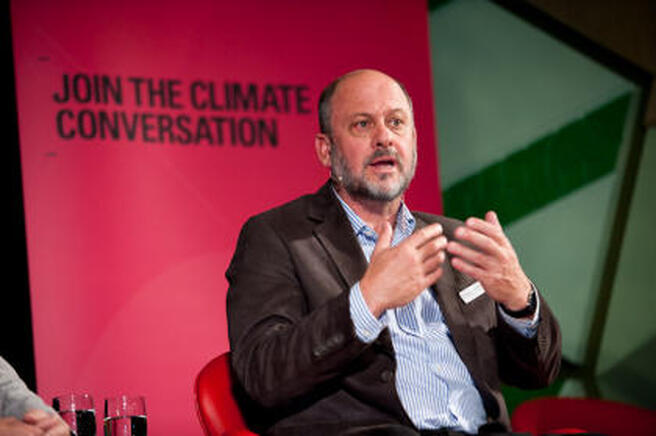
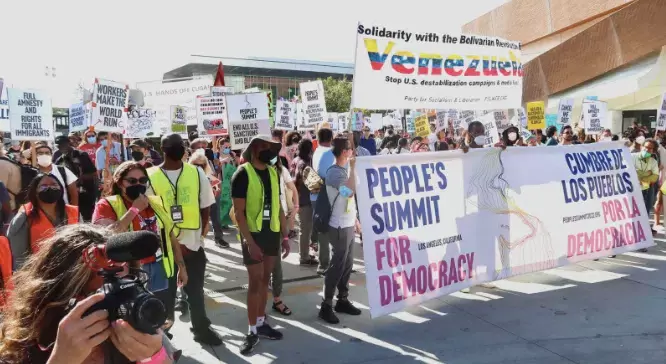
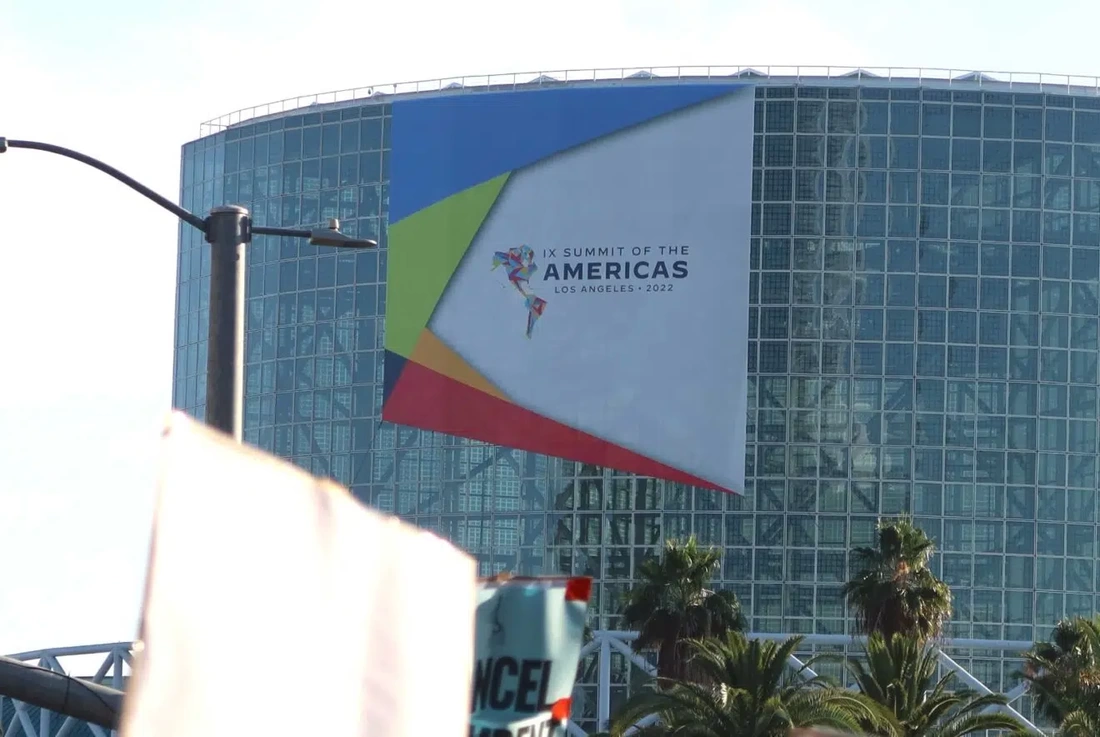
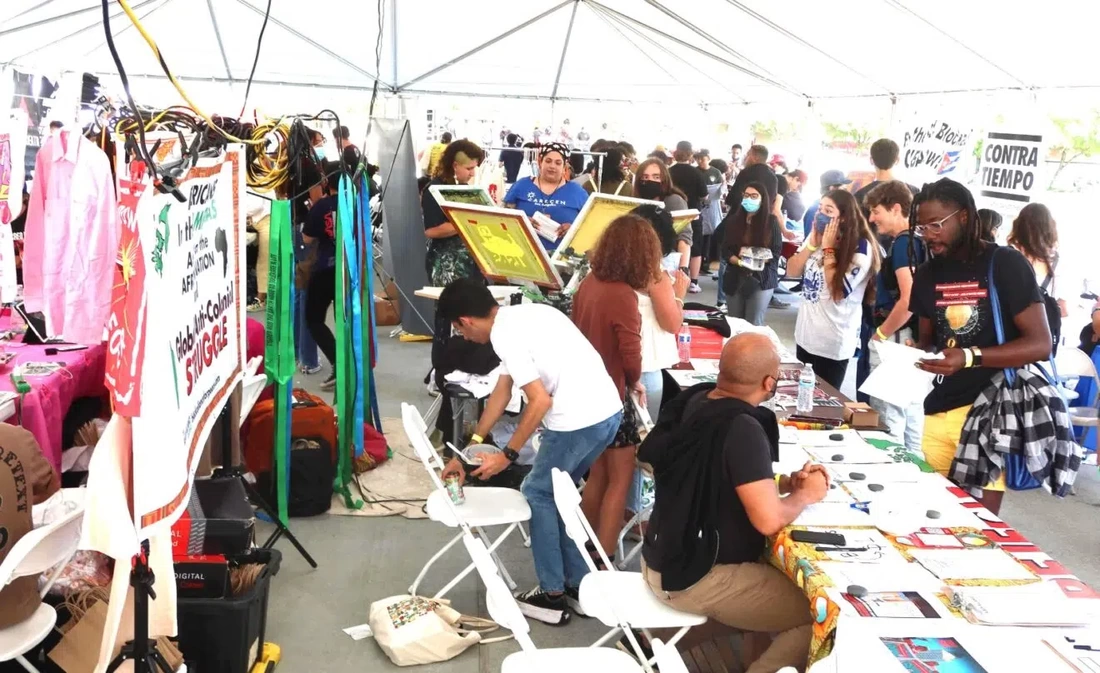

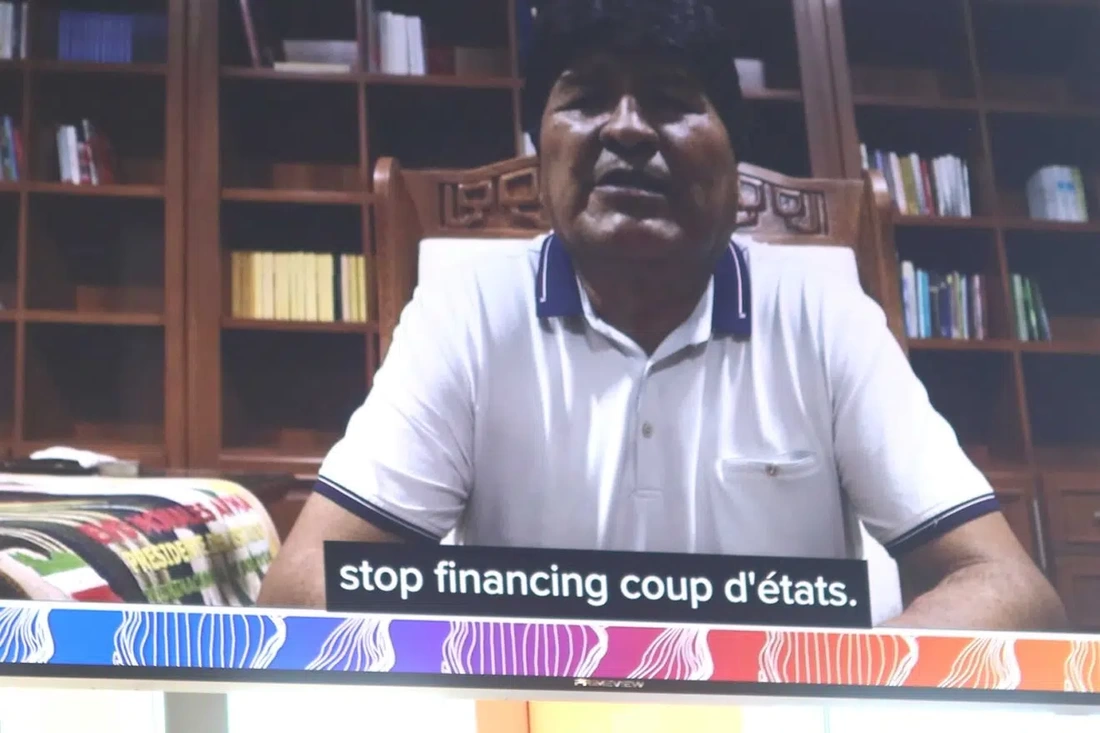
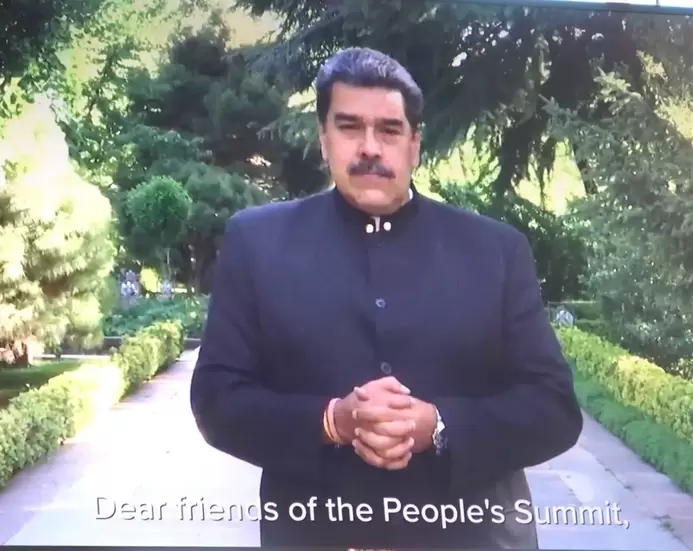
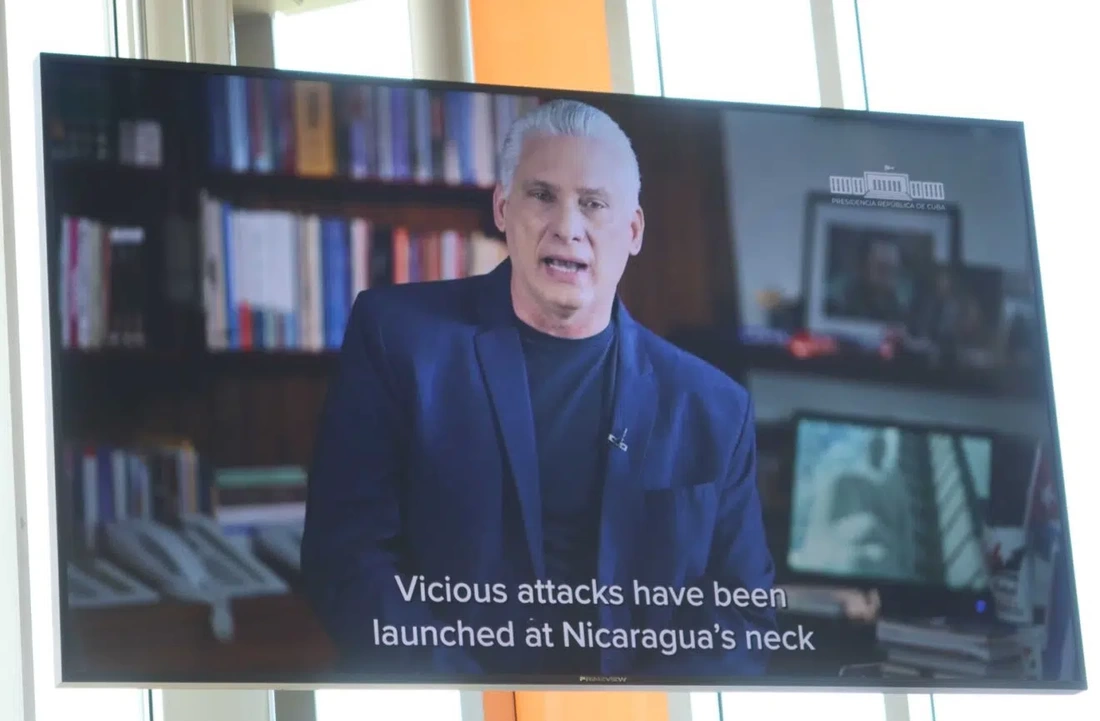
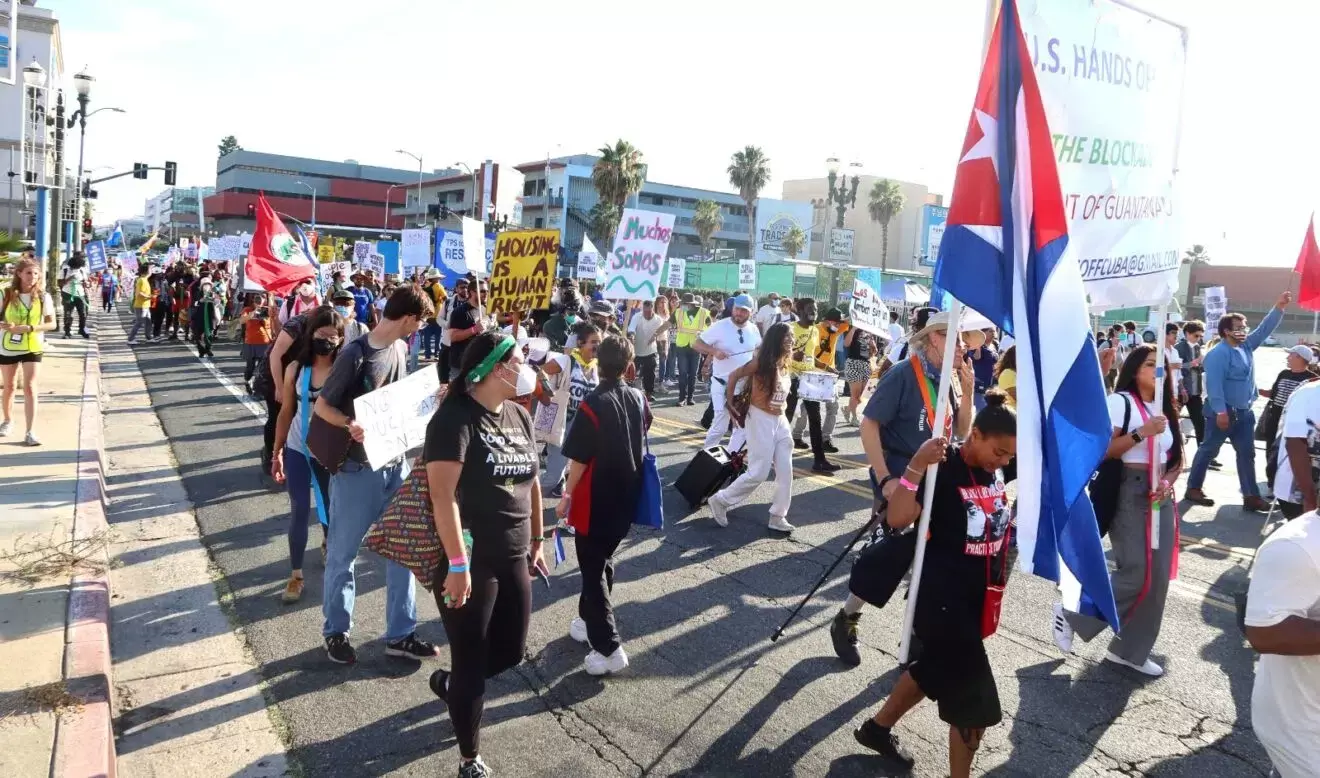
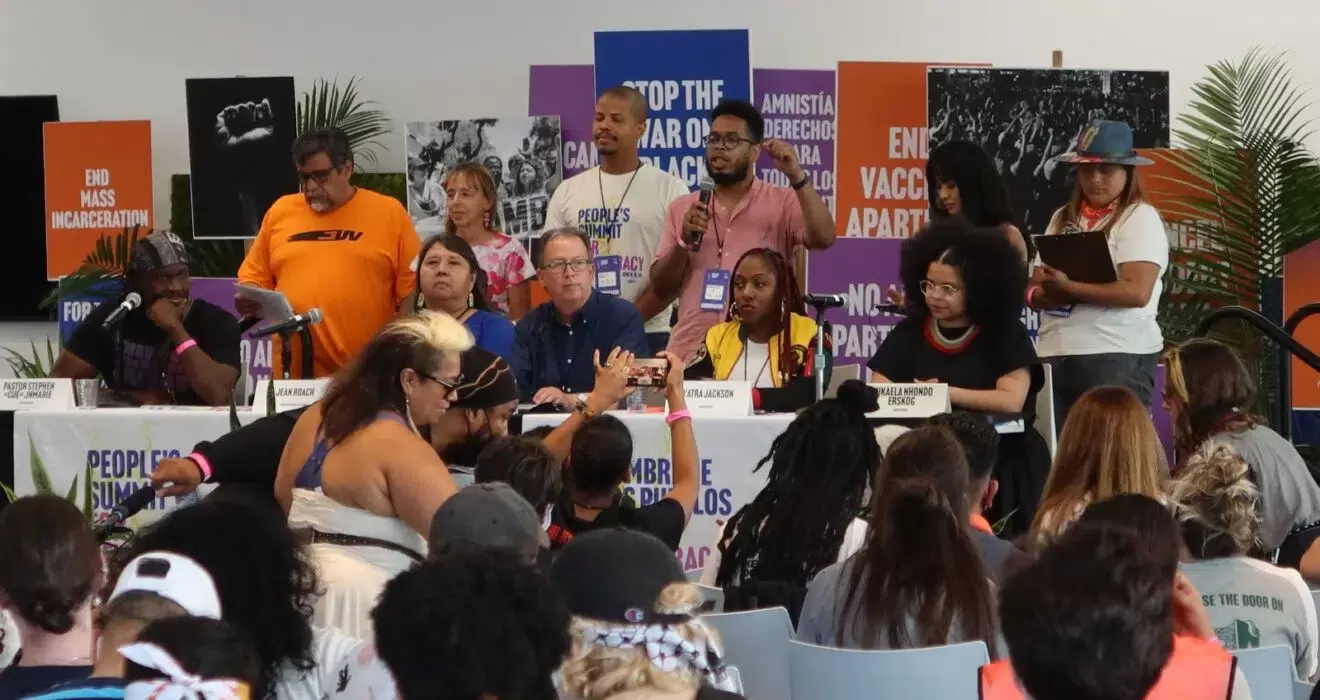
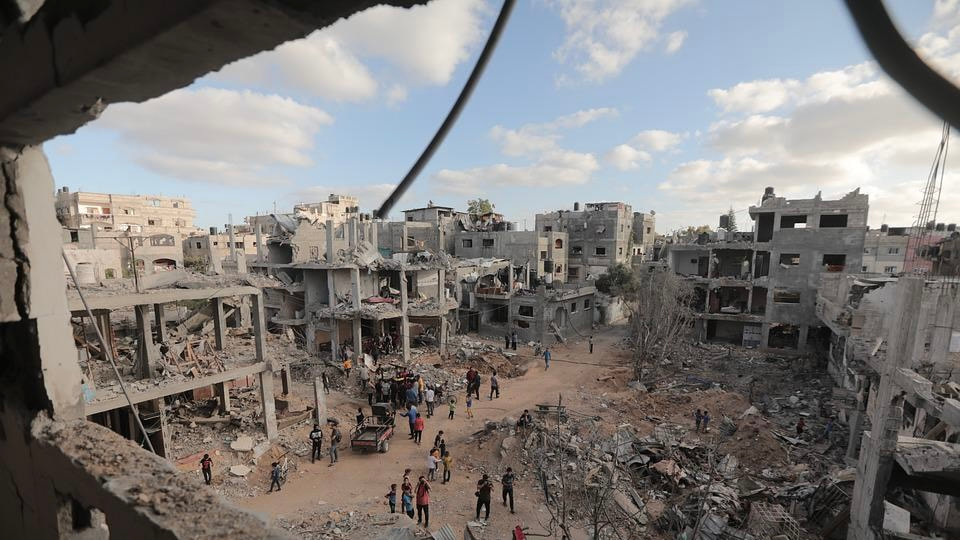
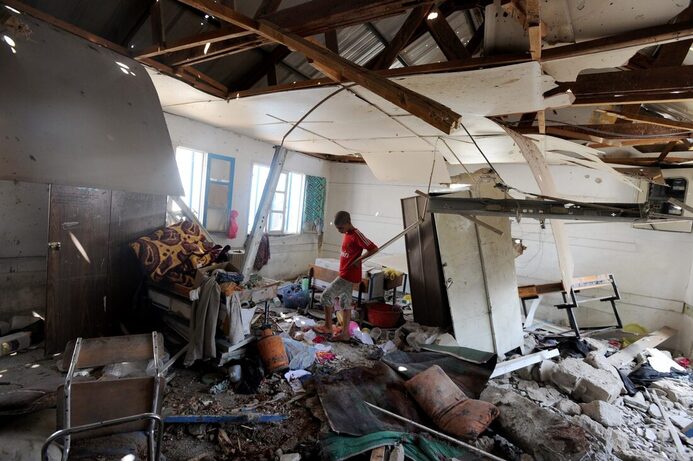

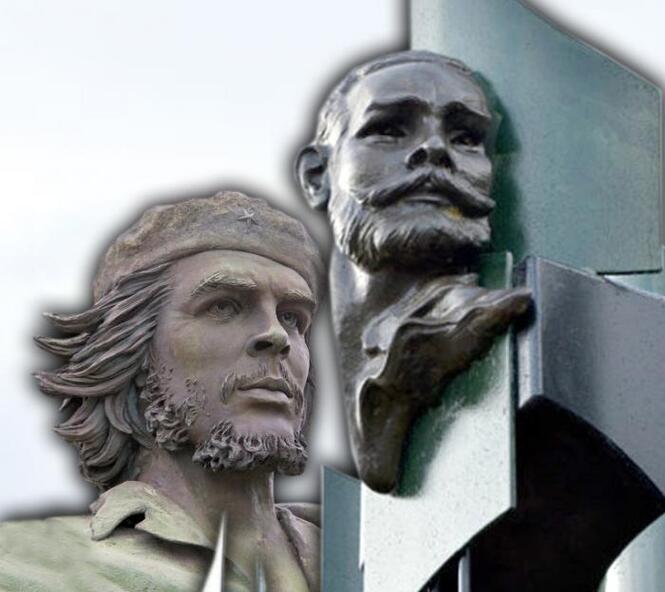
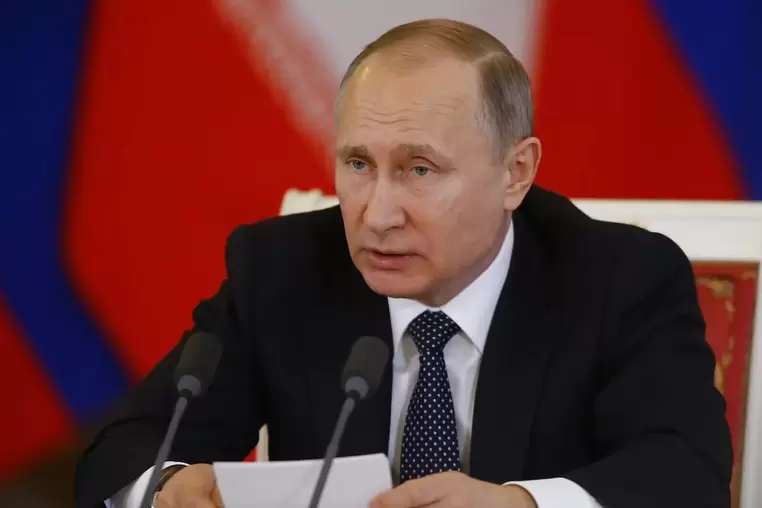
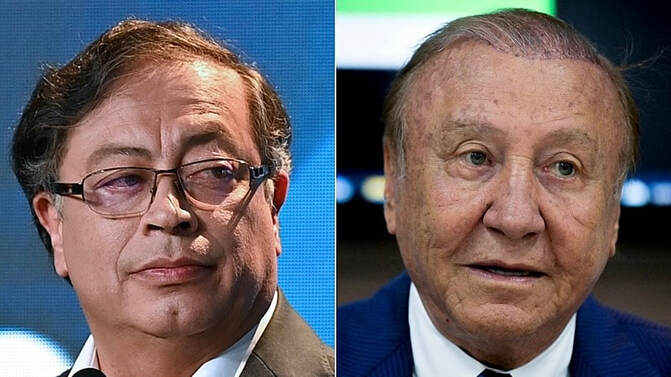

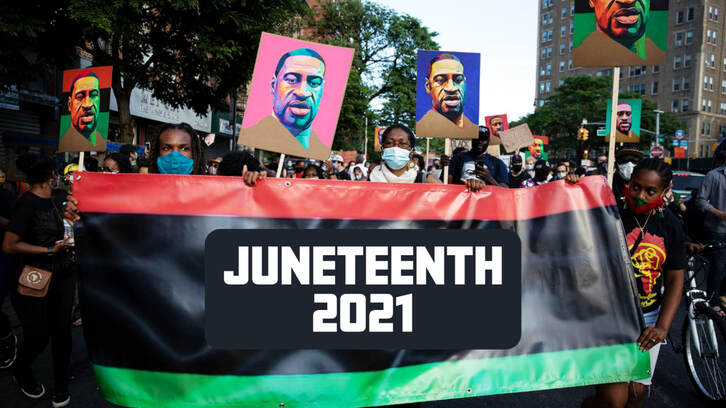
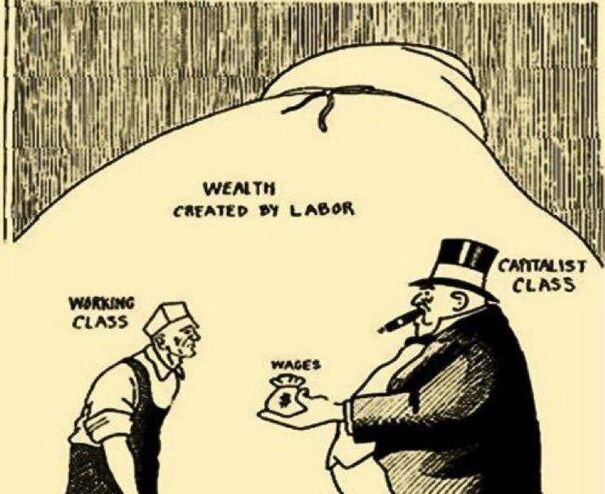

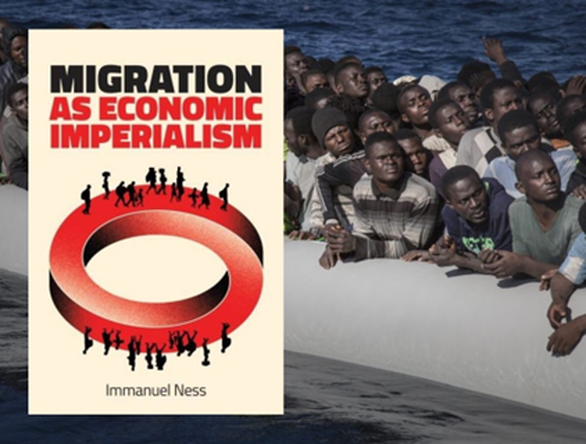

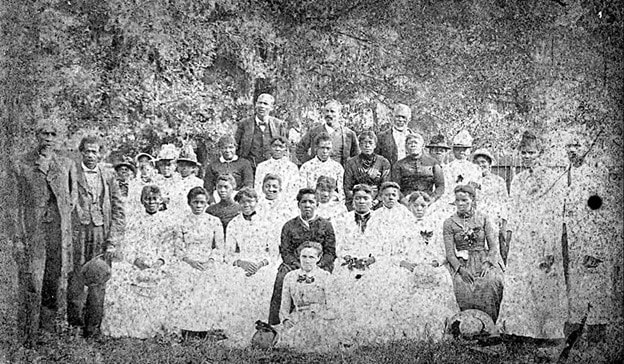
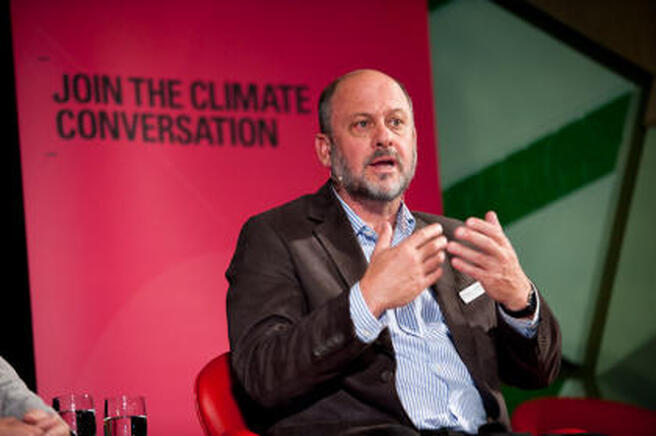
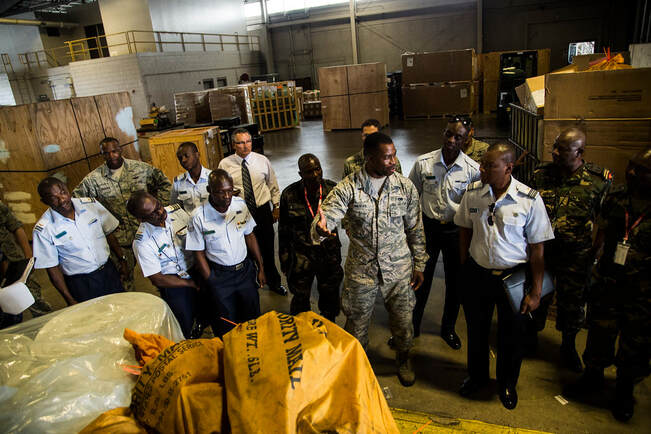
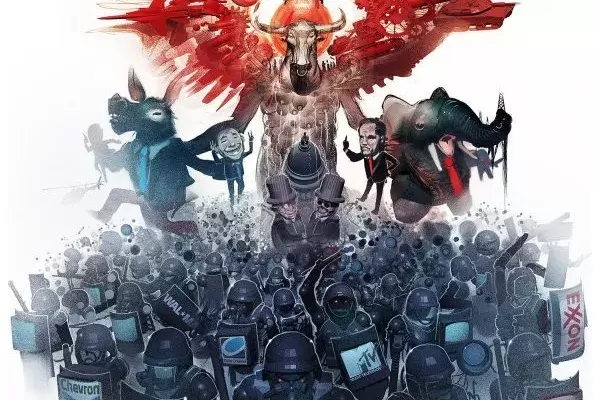

 RSS Feed
RSS Feed